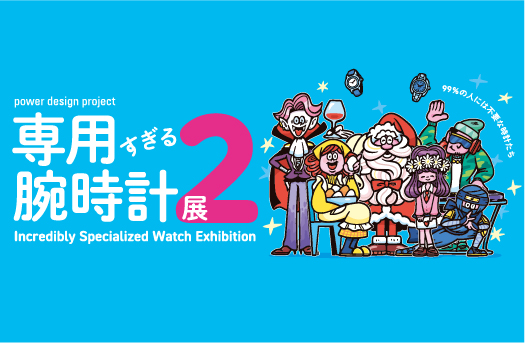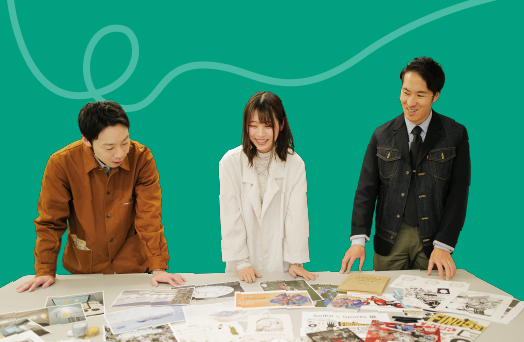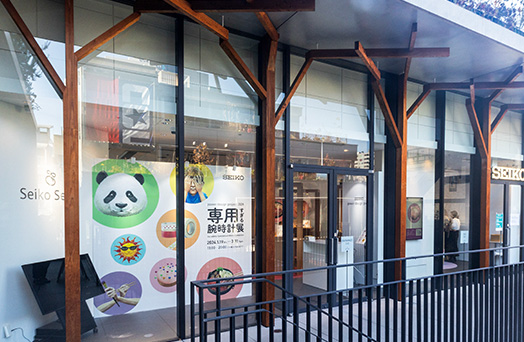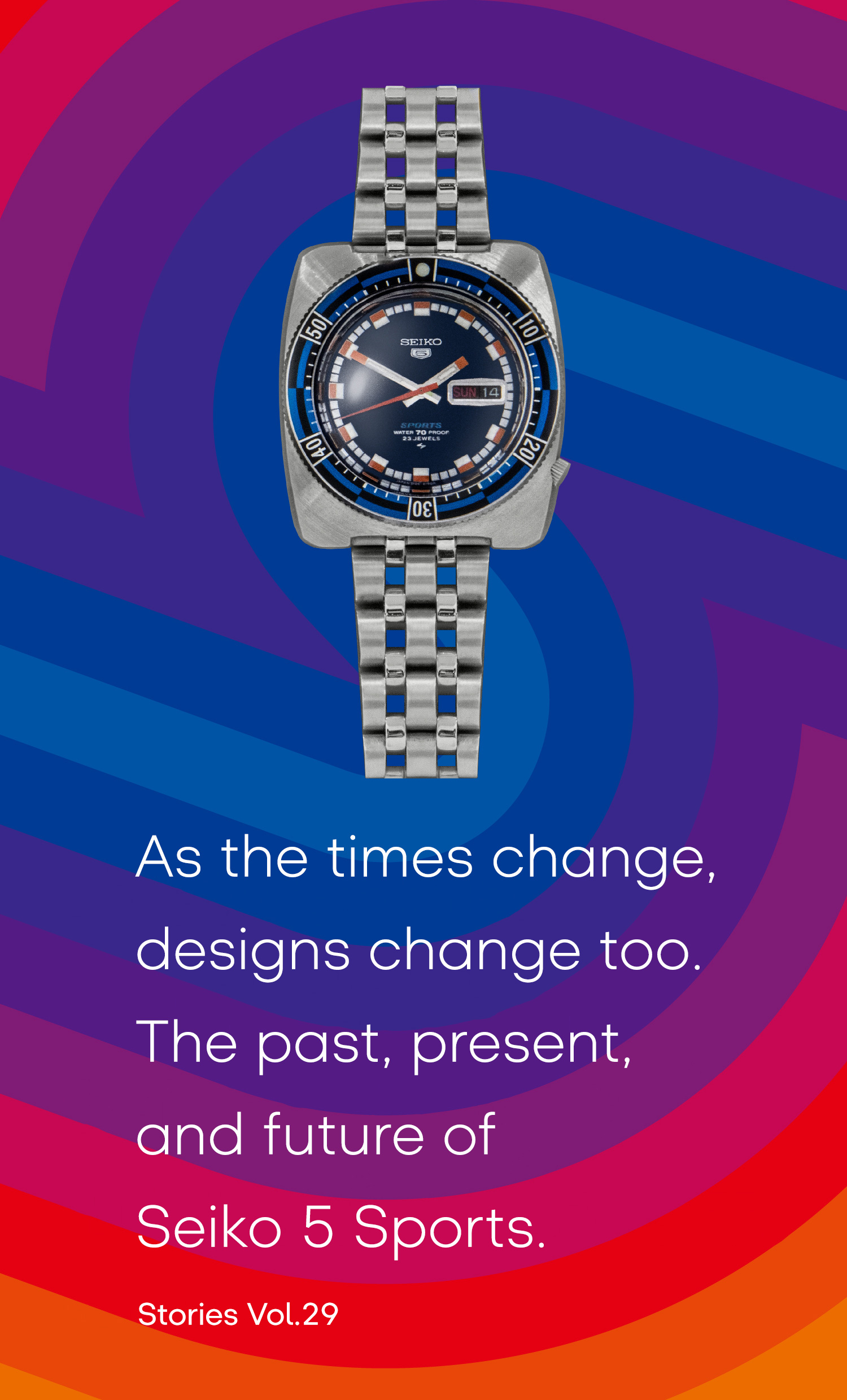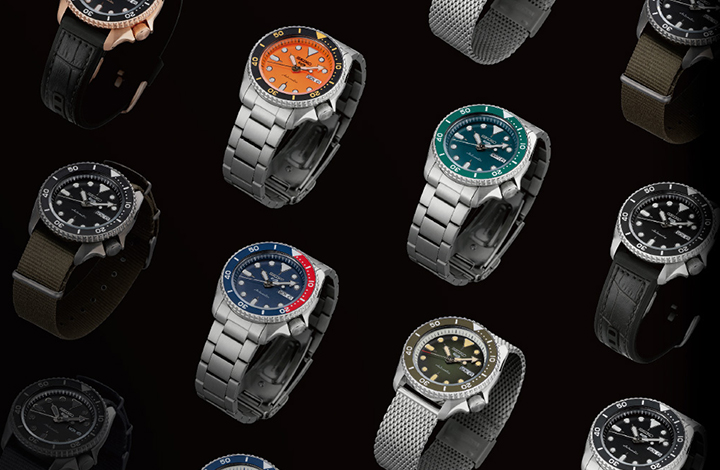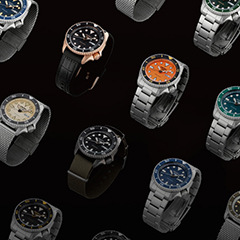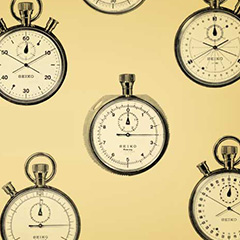The adoration of the youth of the time. Seiko 5 Sports
Kumagai: Today’s theme is about Seiko 5 Sports. But before that, let me welcome you to The Seiko Museum Ginza. Is this the first time for you two to come here?
Suganuma: I’ve been here three times before. The first time was for training before I joined the company. The second time was with my family after receiving a job offer, and the third time was for training after I joined the company.
Fujimoto: I have visited the Seiko Museum once before when it was located in Higashi-Mukojima. This is actually my first visit since the museum moved to Ginza.
Kumagai: The Seiko Museum relocated from Higashi-Mukojima to Ginza in 2020, but many people may not have visited the new location yet due to the admission restrictions associated with the COVID-19 pandemic. Today we will mainly talk about Seiko 5 Sports, but I will also show you around the museum later, so please take your time and enjoy your visit.
Fujimoto & Suganuma: Thank you very much!


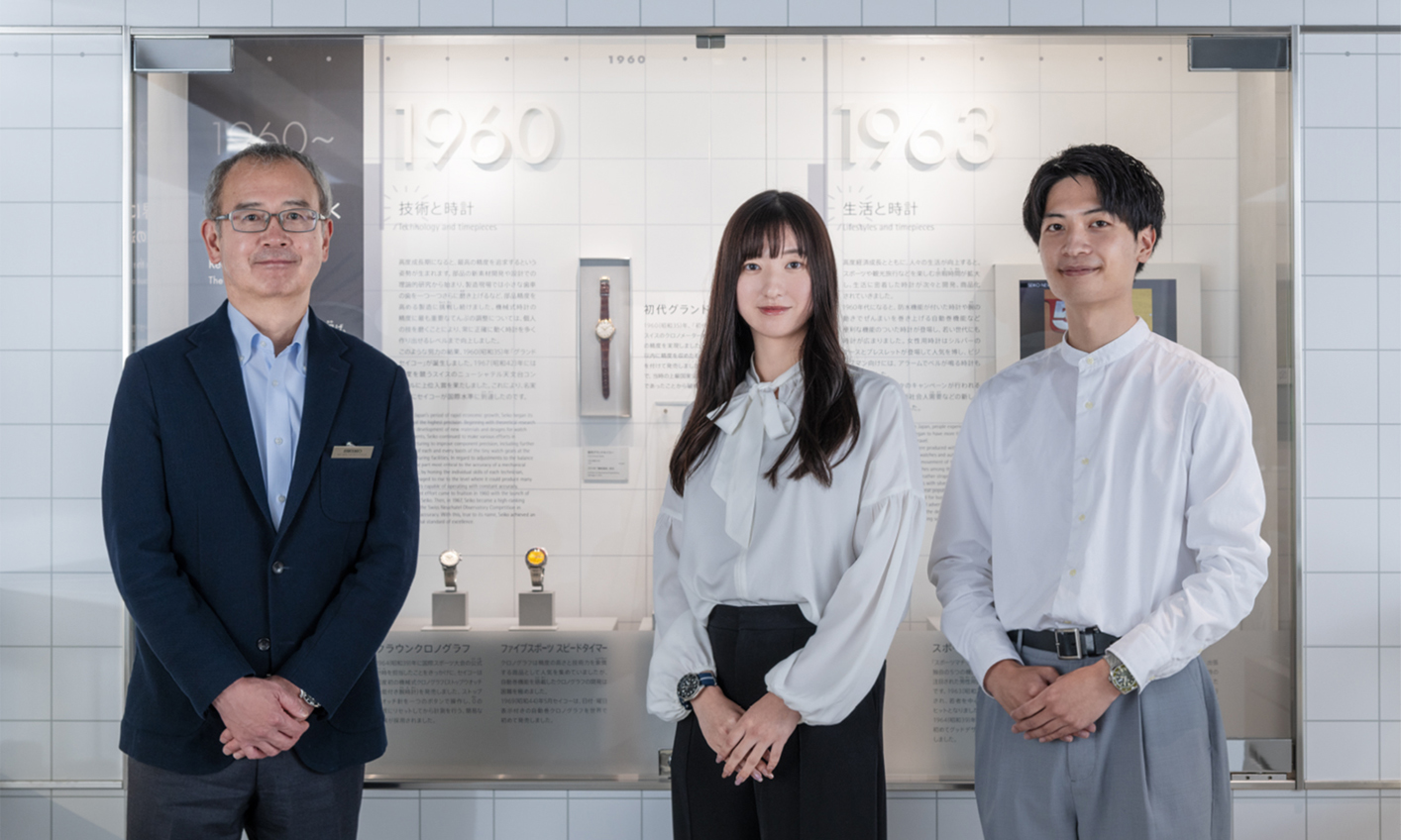
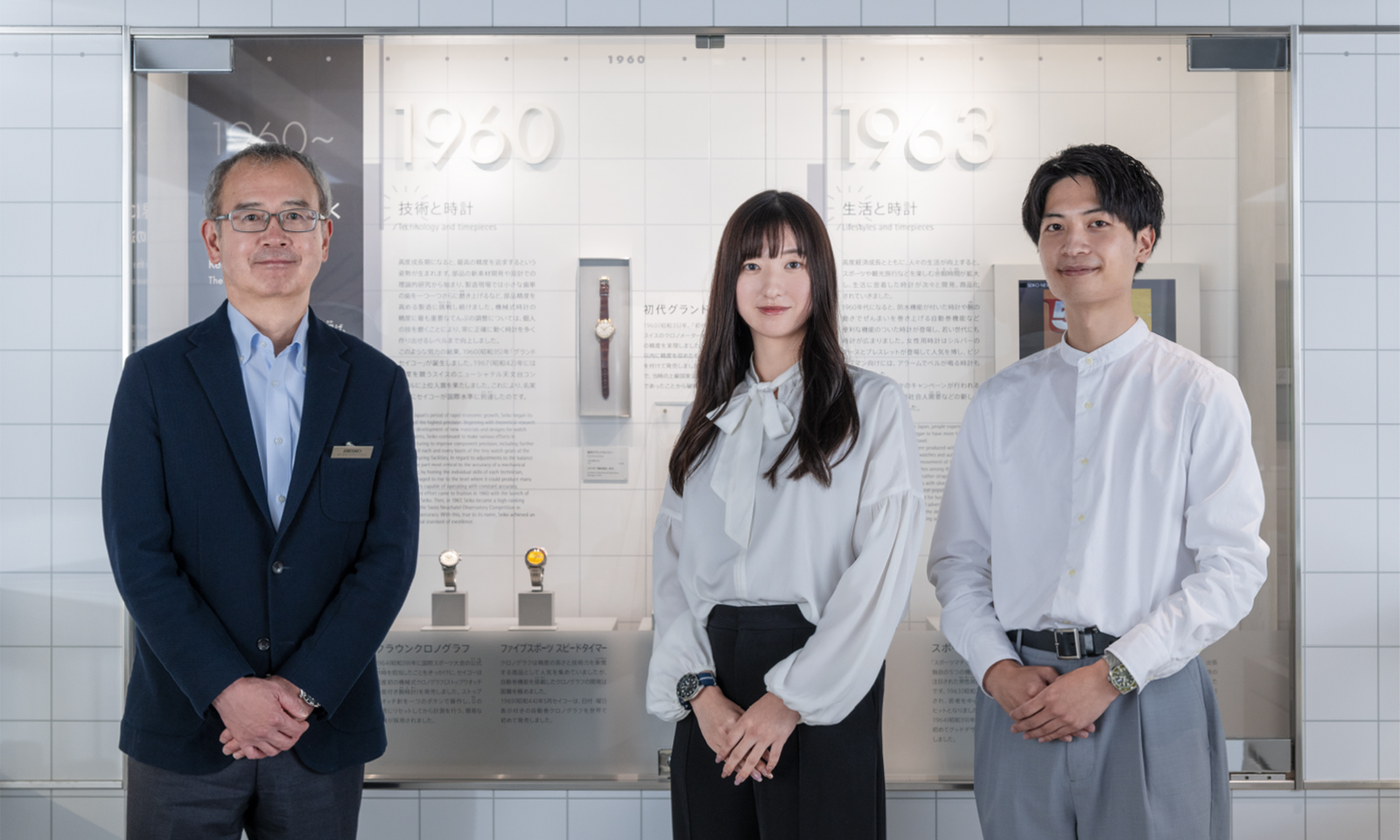
Kumagai: First, let me briefly talk about the history of Seiko 5 Sports. The roots of this series can be traced back to the Seiko Sportsmatic 5, which was launched in 1963. The “5” stands for five features: an automatic movement, water resistance, integrated day and date window at the 3 o’clock position, crown at the 4 o’clock position, and a case and bracelet built for durability.
Suganuma: This was also when the day and the date started to be displayed together.
Kumagai: All of these elements, which now seem standard, were very advanced at the time. Five years later, in 1968, Seiko 5 Sports was created in response to the accelerating sports boom. In addition to the advances in functions, the sporty design with vivid color accents was also highly appealing to the youth and the new watch took the world by storm.
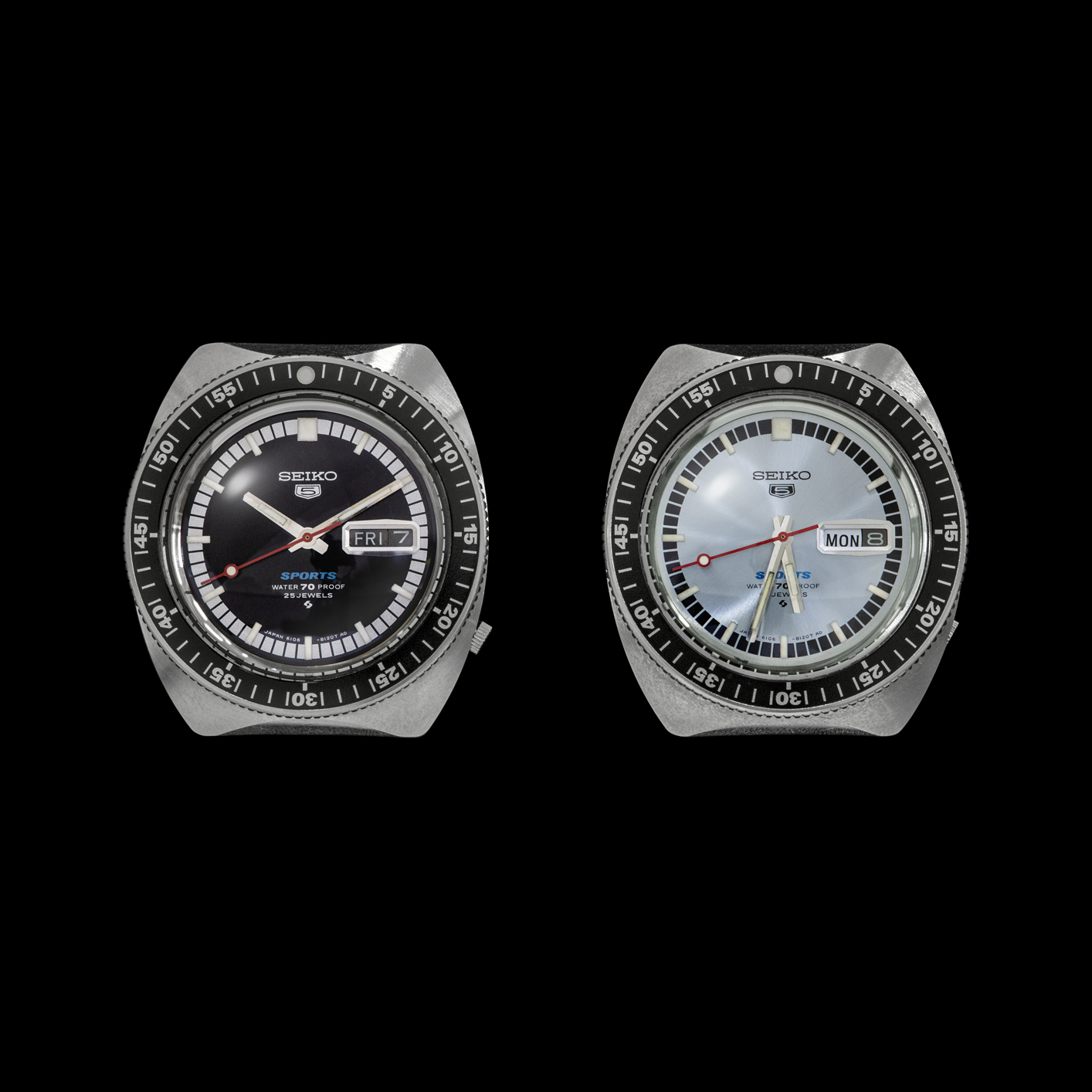
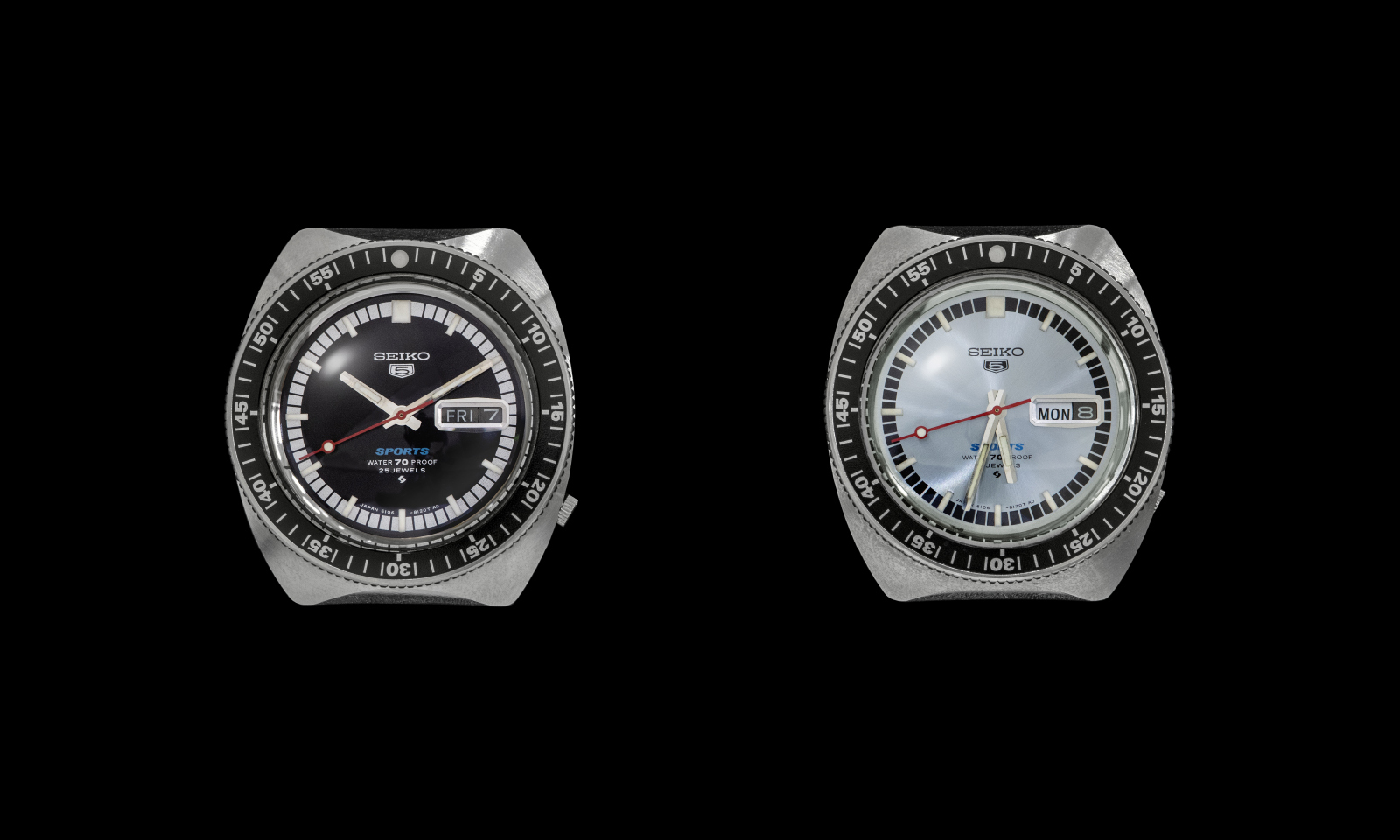
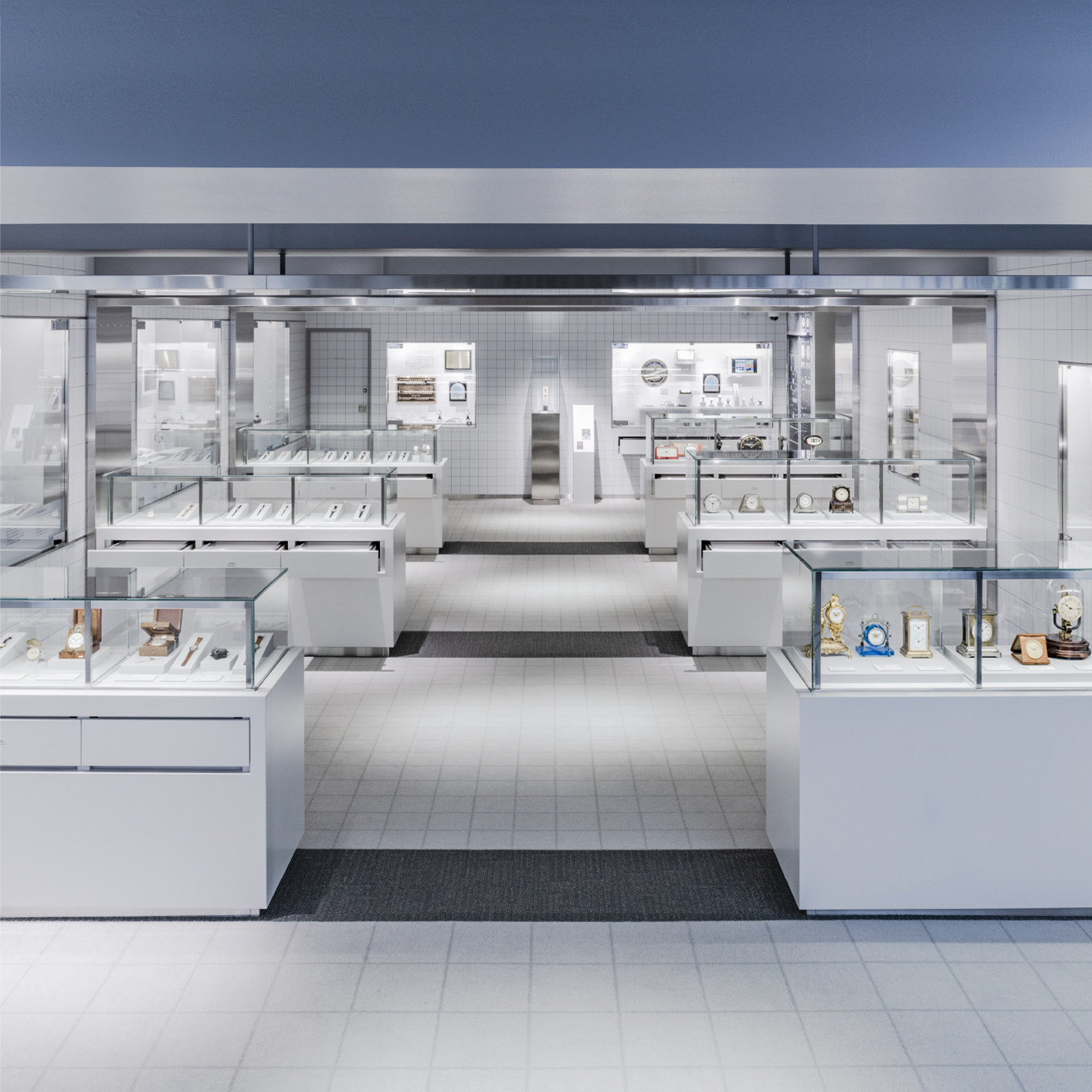
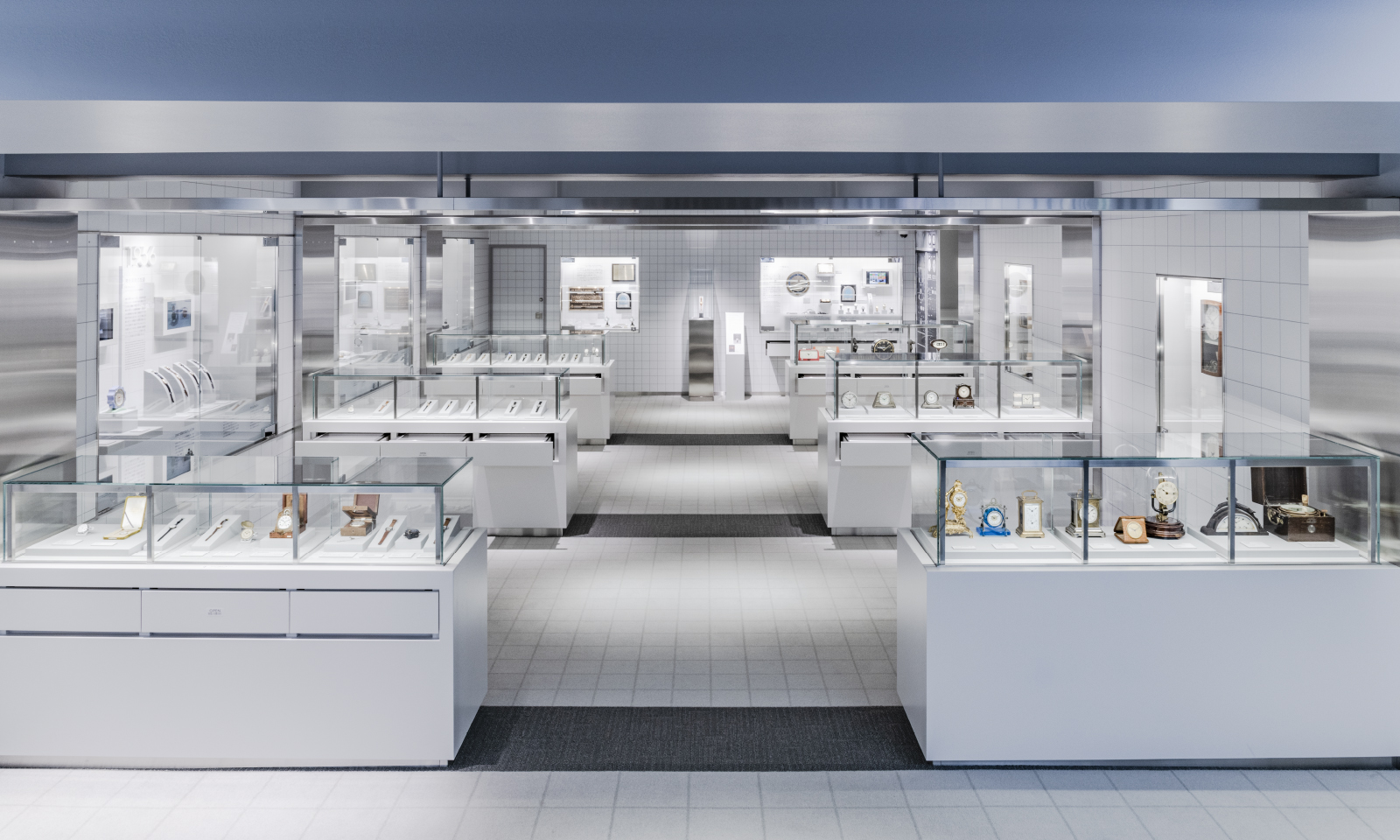
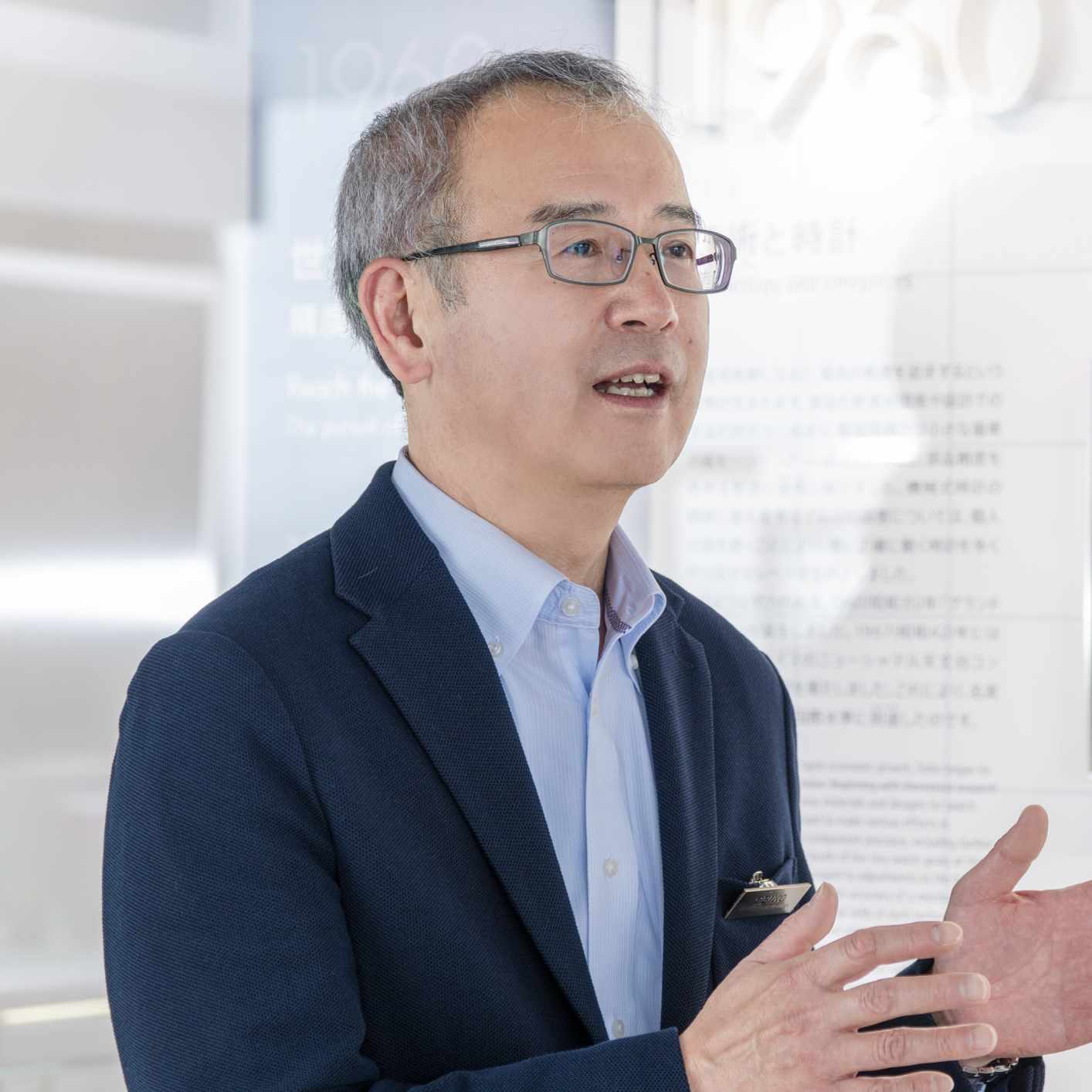
Kumagai joined Seiko in 1980, and was put in charge of product design, mainly for the Pulsar and Seiko brands. After a stint in Milan in 1989, he worked on product planning for the Seiko brand and product planning and sales for licensed brands. Since 2012, he has been working at the Seiko Museum, where he is in charge of museum-related explanations, workshops, and press coverage.
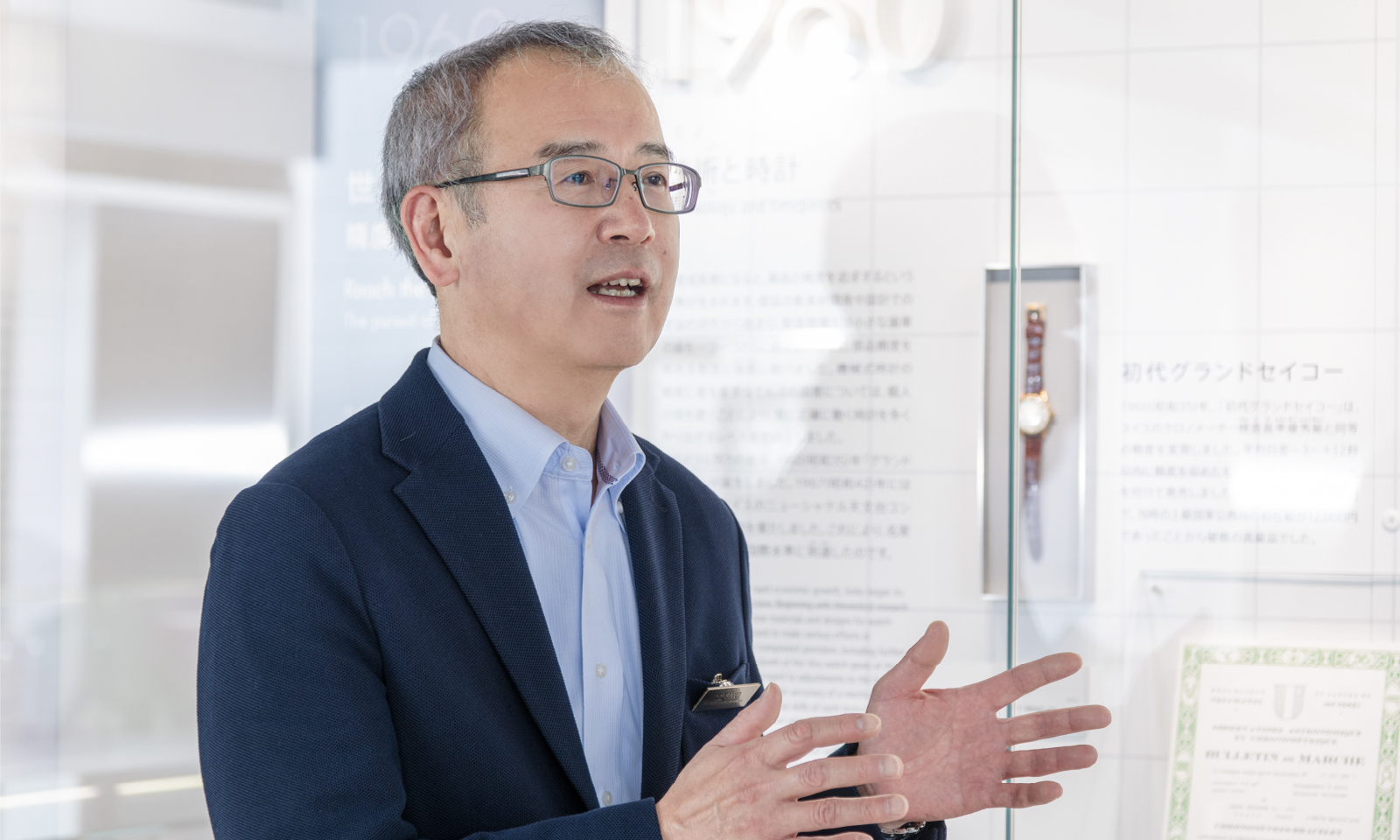
Kumagai joined Seiko in 1980, and was put in charge of product design, mainly for the Pulsar and Seiko brands. After a stint in Milan in 1989, he worked on product planning for the Seiko brand and product planning and sales for licensed brands. Since 2012, he has been working at the Seiko Museum, where he is in charge of museum-related explanations, workshops, and press coverage.
A free and unique design that represents the 1960s and 1970s.
Kumagai: With these watches from that period lined up in front of you now, as the youth today, what kind of impression do you get?
Suganuma: Overall, many of the cases have a thickness to them, like a solid piece of metal. The designs are also majestic and noble.
Kumagai: That’s true. In recent years, many watches have been designed to be lighter and more compact, but I don’t think there was much of this kind of sense at that time. Rather, it may have been a time when the youth felt that the presence and weight of a watch was valuable.
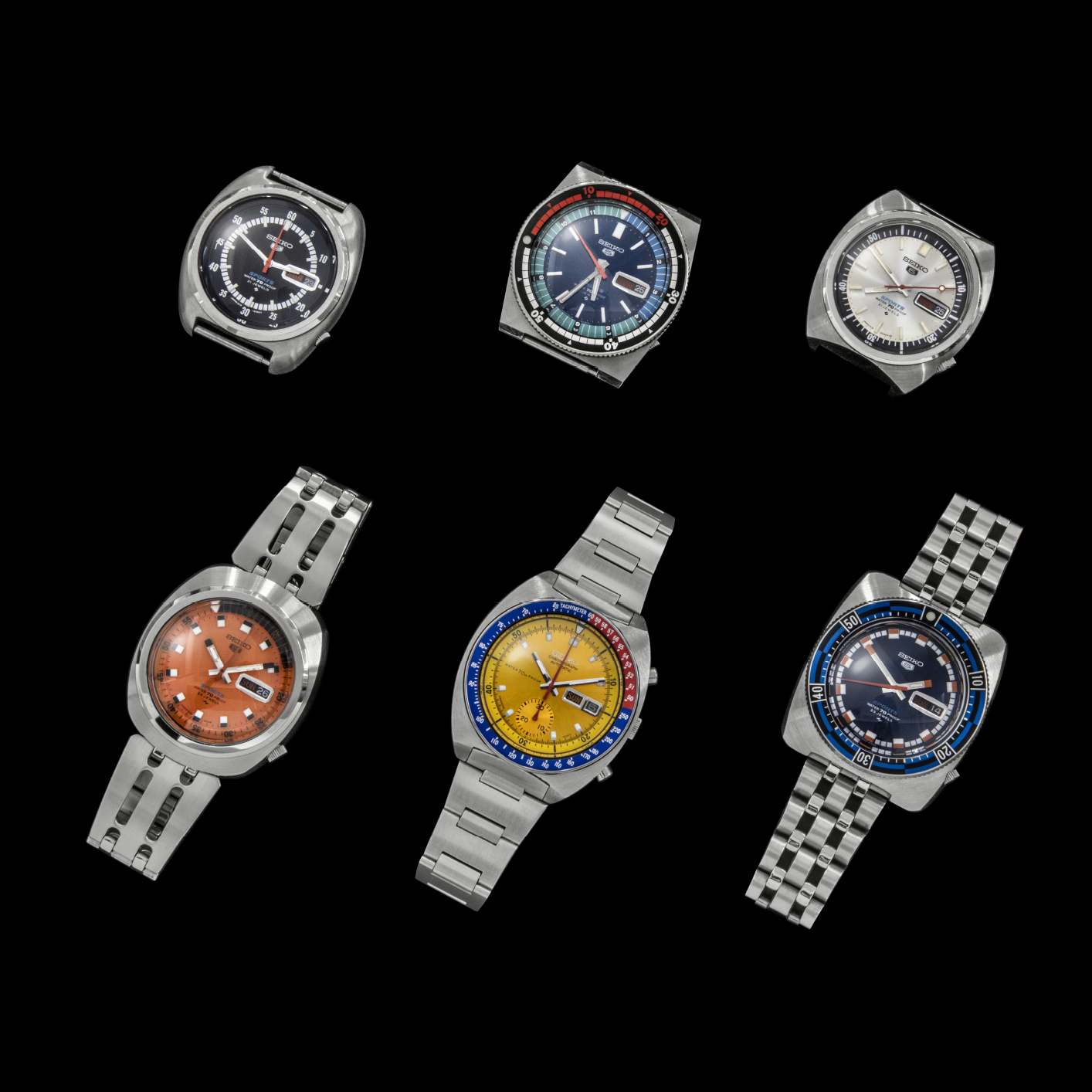
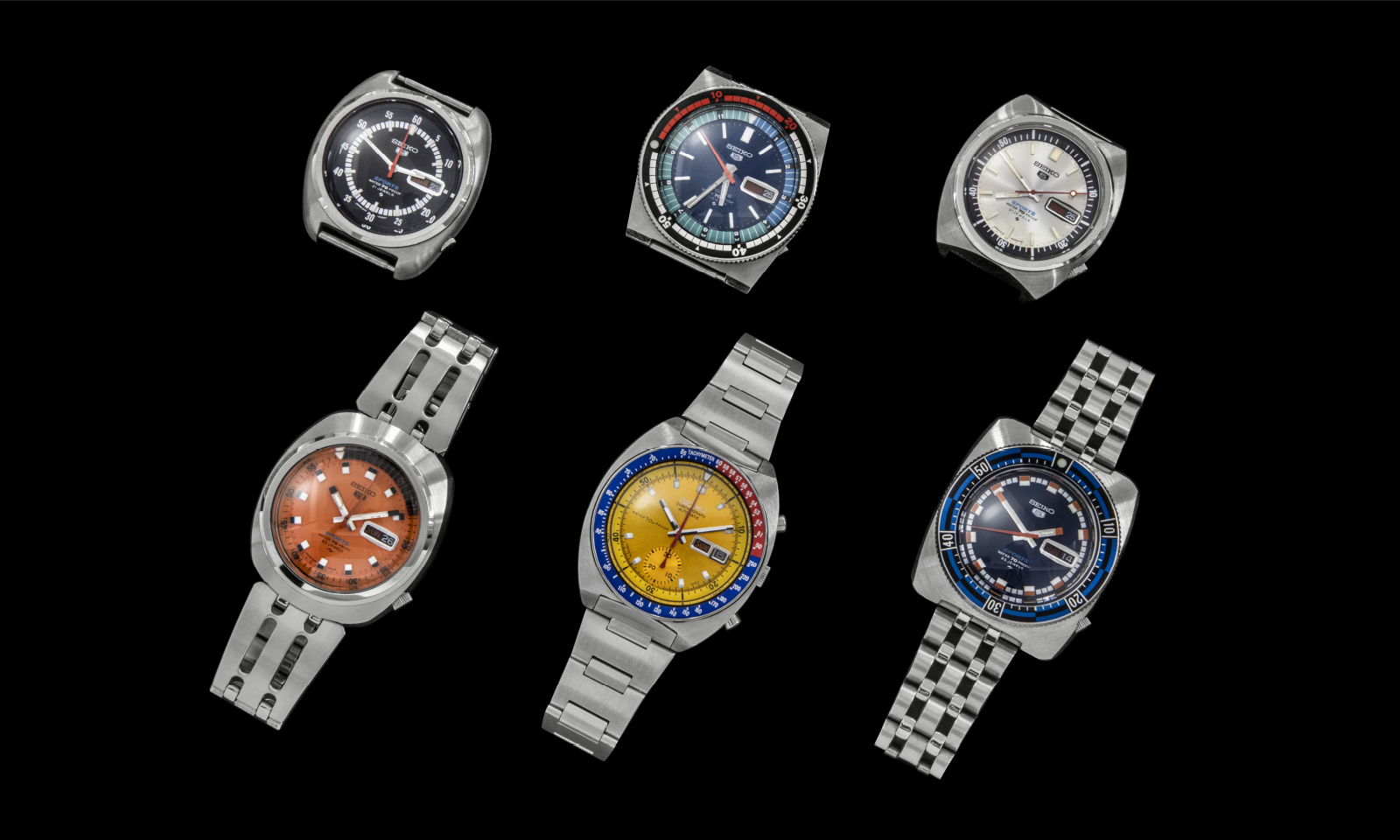
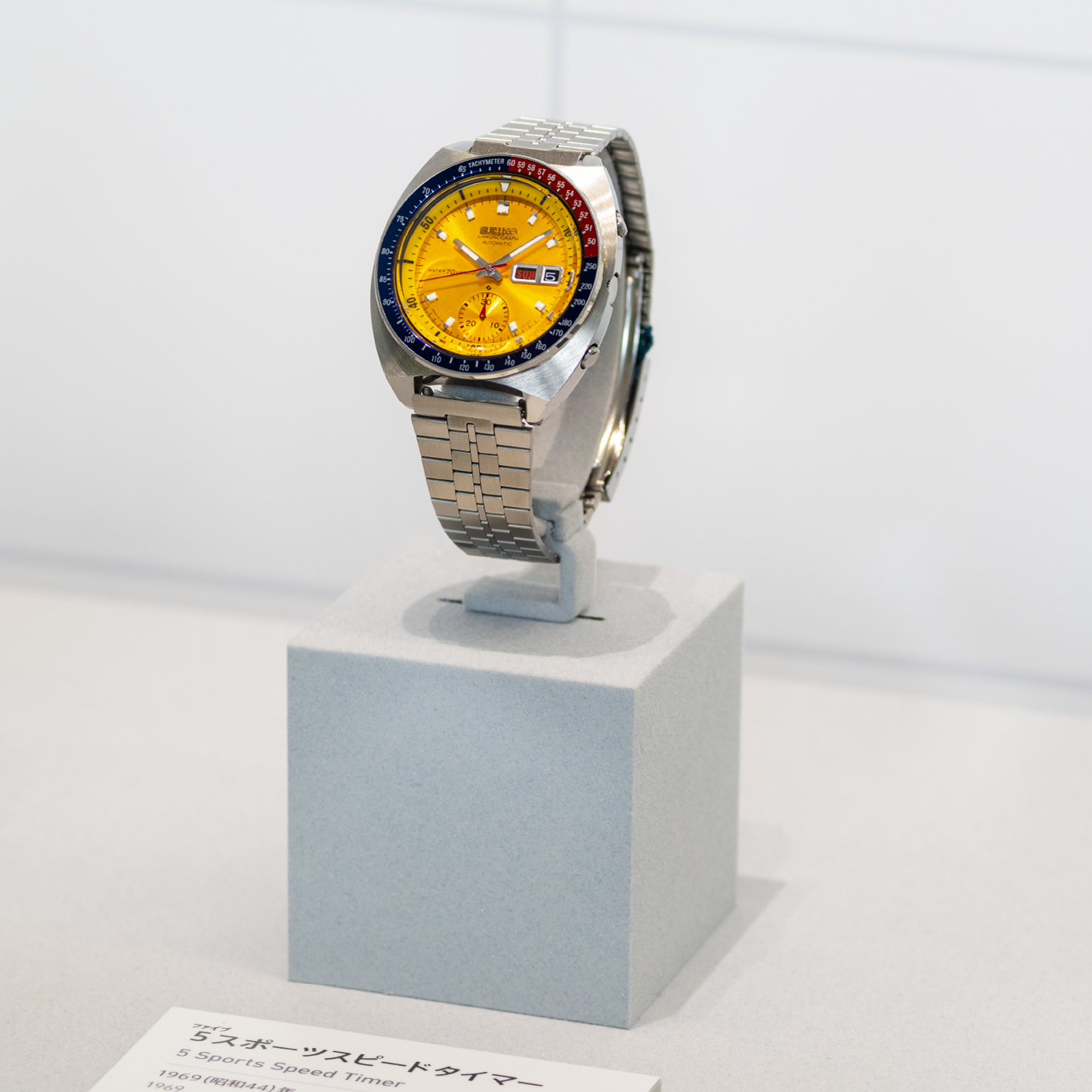
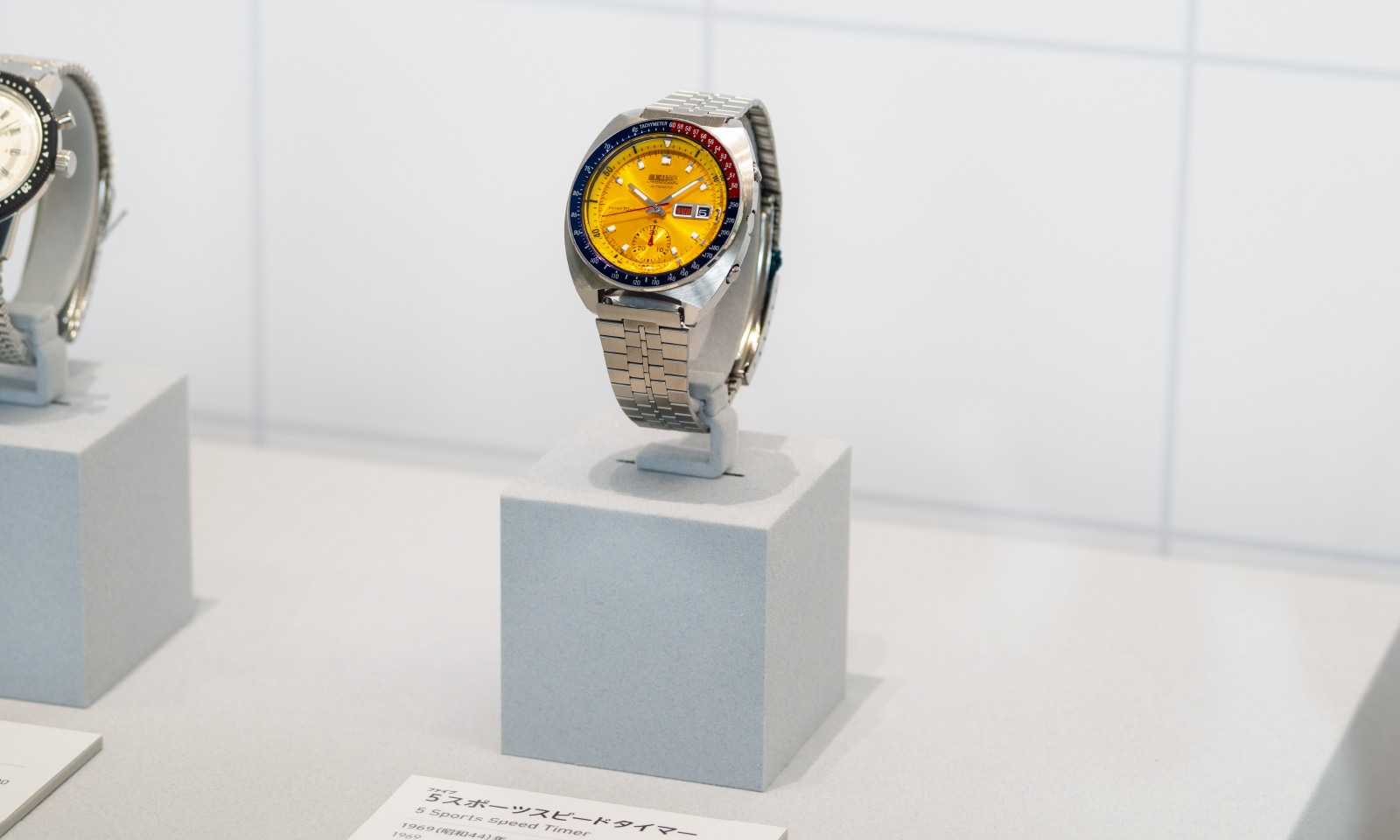

Suganuma joined Seiko in 2021. In this age when focus is shifting away from physical objects toward intangible products, he joined Seiko with the desire to convey the beauty of objects in the form of watches. He is a new designer assigned to the Seiko 5 Sports Team.

Suganuma joined Seiko in 2021. In this age when focus is shifting away from physical objects toward intangible products, he joined Seiko with the desire to convey the beauty of objects in the form of watches. He is a new designer assigned to the Seiko 5 Sports Team.
Fujimoto: The color scheme is very free and the combinations are unique. The early watches launched in 1968 would not look out of place in this day and age, but from that point on, I get the impression that the number of watches with unexpected color schemes and graphics increased in the 1970s.
Kumagai: It was also around the 1960s that the younger generation started to pay attention to fashion, and I feel that the Ivy League look and psychedelic trends of the 1970s also influenced the designs. There are many colors and designs that are quite ambitious, don’t you think?
Fujimoto: I am particularly interested in this checkered watch. It’s quite surprising to see such bold decoration on the most visible part of the watch, but I feel that it has an indescribable charm.
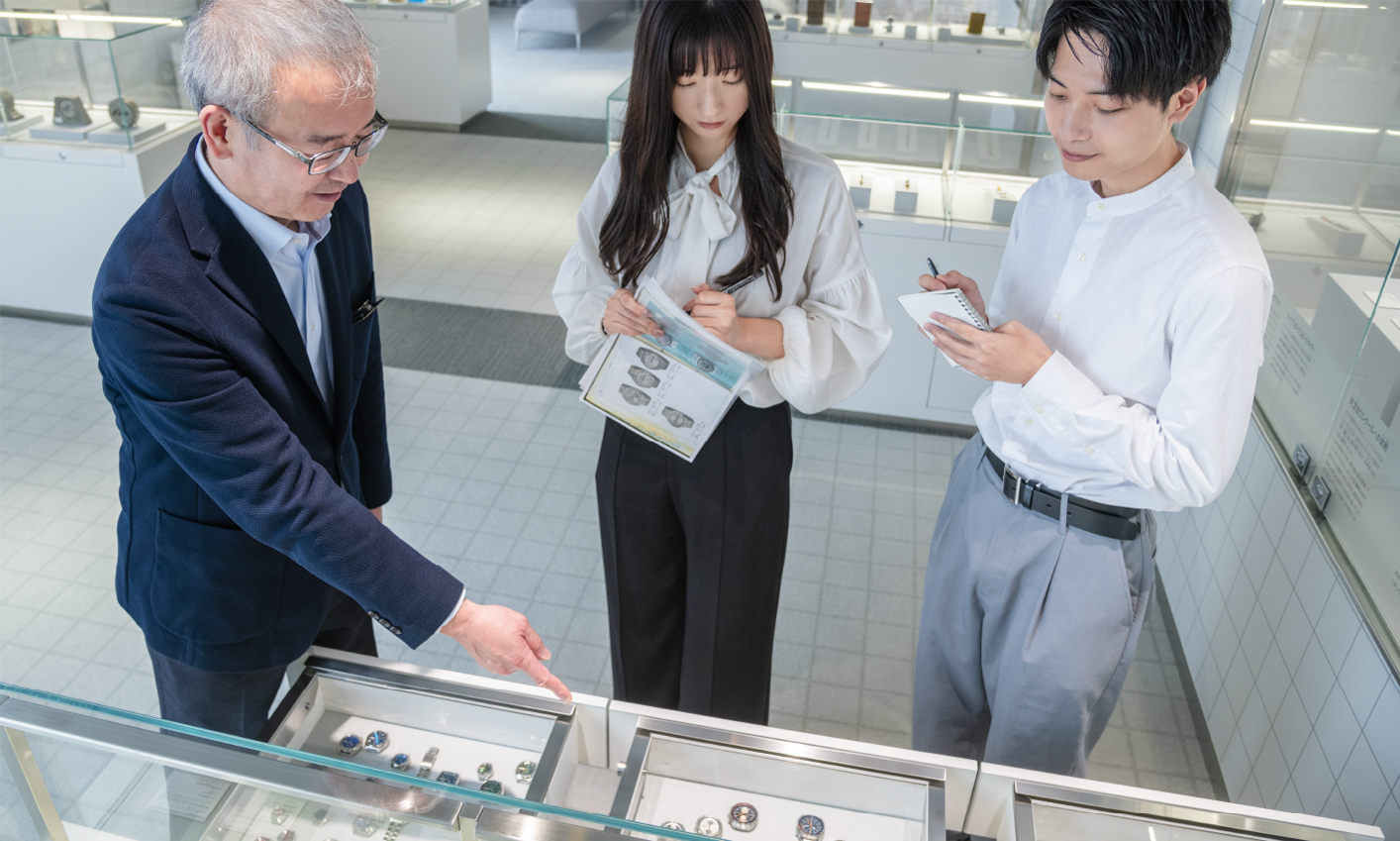
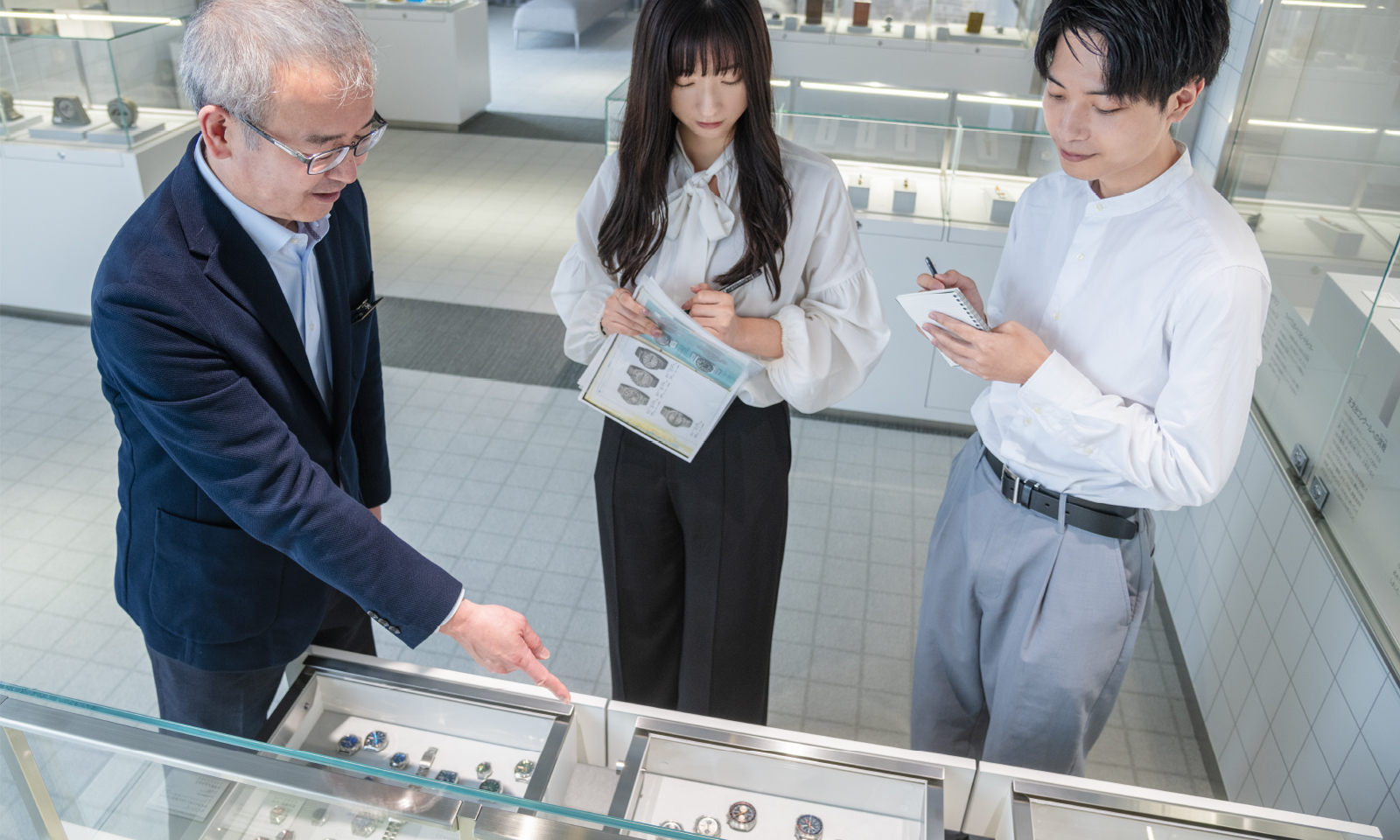
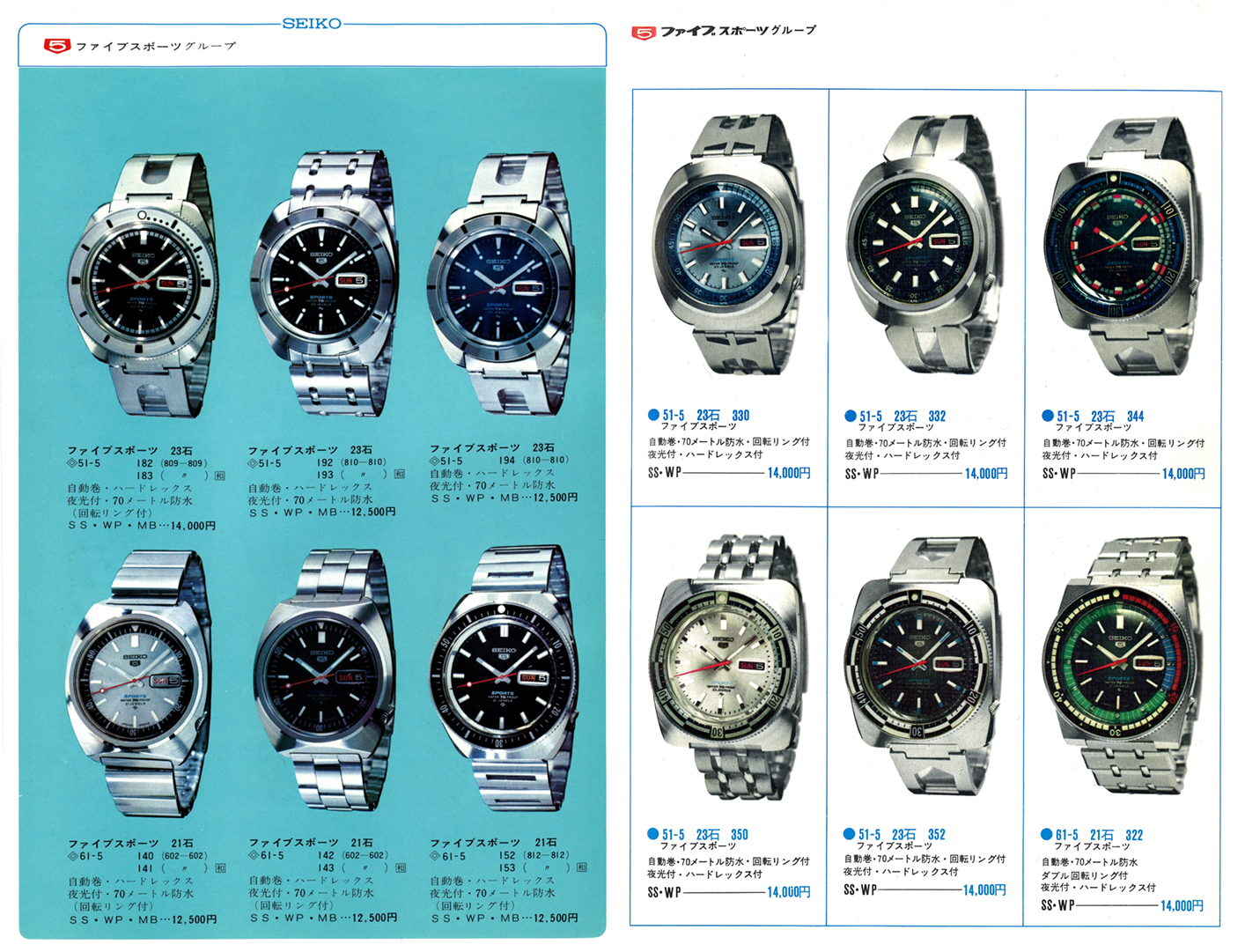
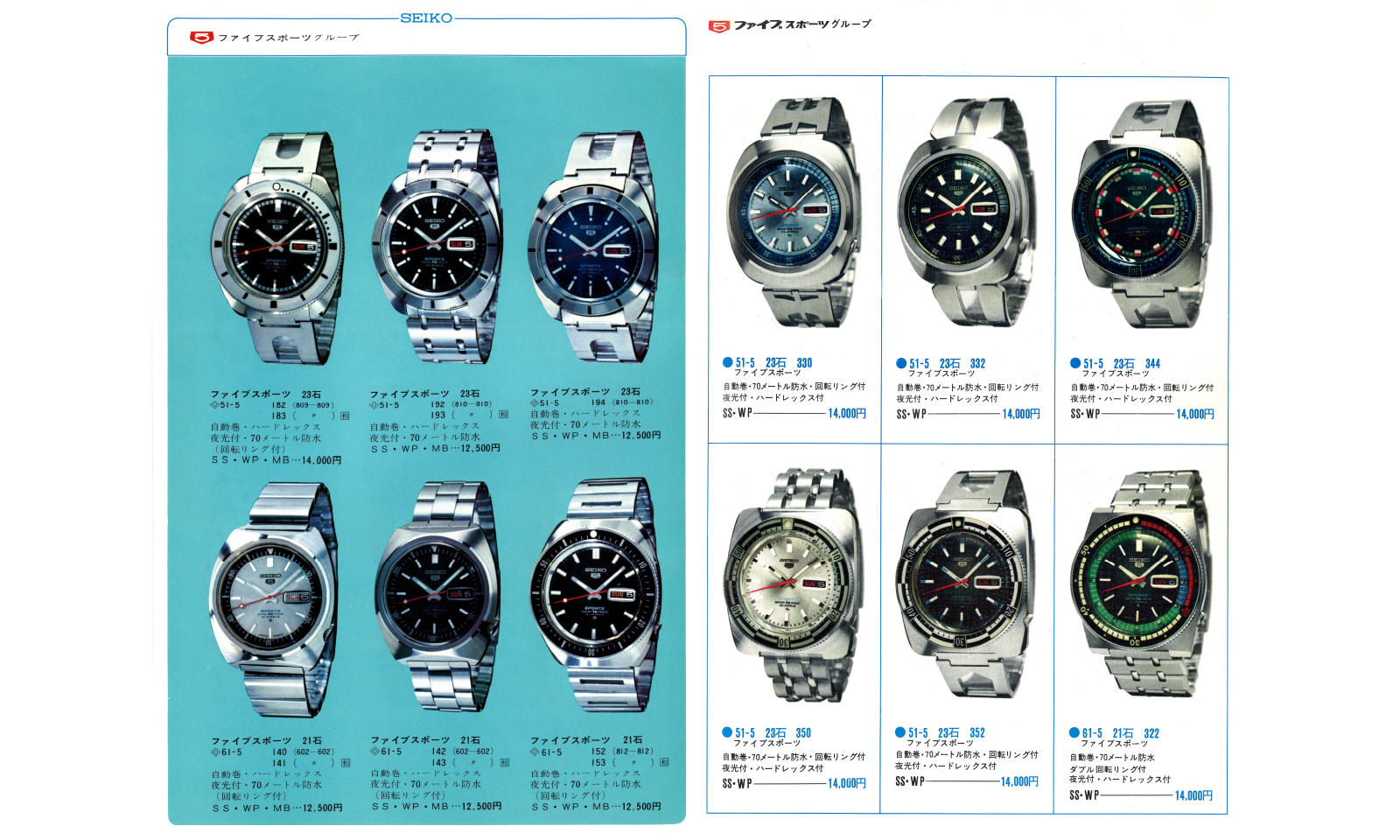
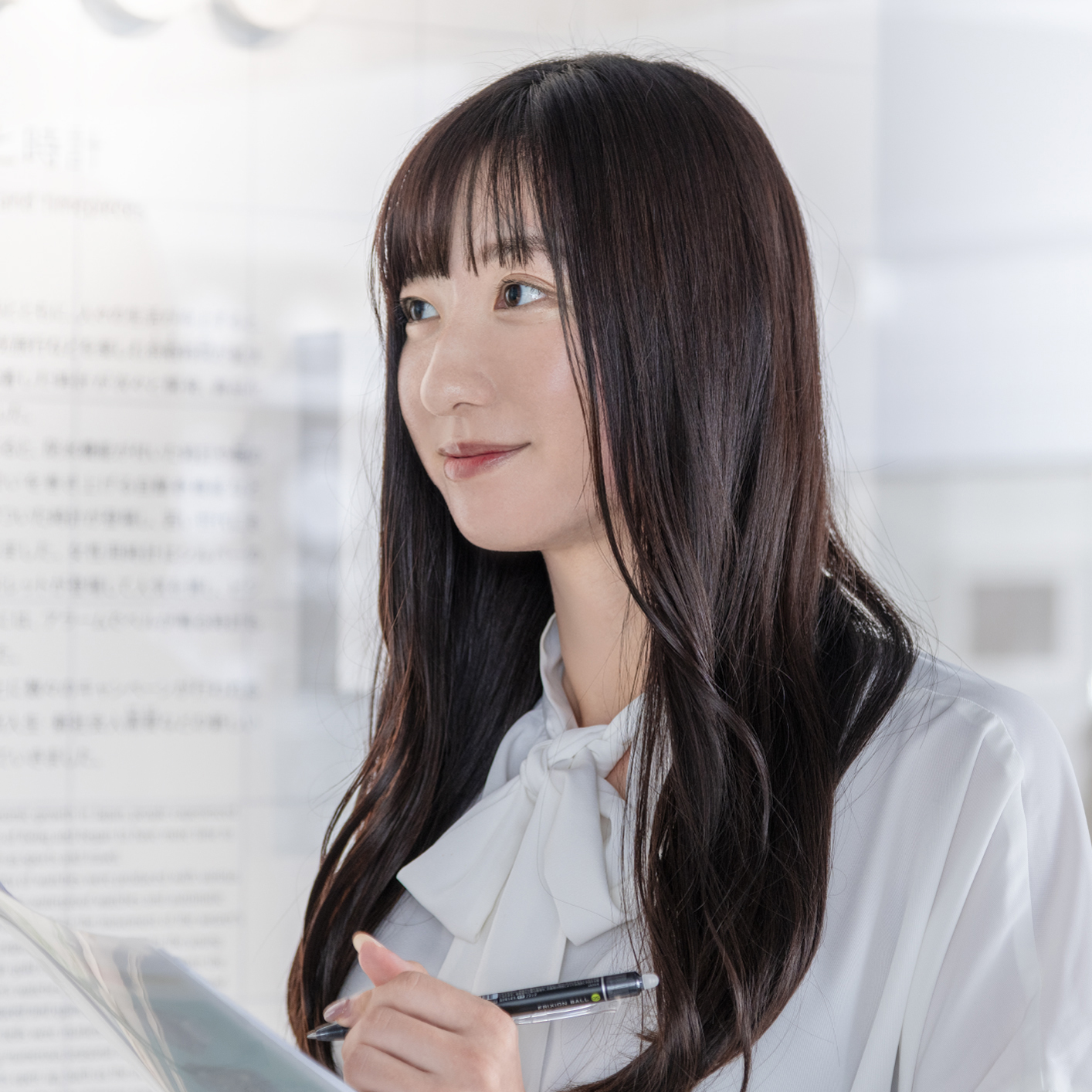
Fujimoto joined Seiko in 2019. Her desire to join the company grew from her fascination with Credor FUGAKU. She is a young planner who became a member of the product planning team for Seiko 5 Sports in 2021.

Fujimoto joined Seiko in 2019. Her desire to join the company grew from her fascination with Credor FUGAKU. She is a young planner who became a member of the product planning team for Seiko 5 Sports in 2021.
A design with a different sense of values than we have today.
Kumagai: Are there any other watches that caught your attention?
Suganuma: The first one that drew my attention is this watch: The wide bezel and the lug of the case with its strong presence. The watch as a whole gives a rugged impression, but the designer’s attention to detail is evident everywhere, from the metallic luster of the dial ring to the curved surface of the glass.
Fujimoto: It is also unique that the indexes on the dial are deliberately designed to look like a band. The red second hand against the black dial gives an active and sporty impression, reminiscent of a car or motorcycle speedometer, and I feel that it embodies the “coolness” that the younger generation of the time were keen on.
Suganuma: I heard from one of my seniors that this model is also known among fans as the one worn by the protagonist in the first series of the Japanese hero TV show Kamen Rider. I think it was a really cool watch that matched the heroes of the time.
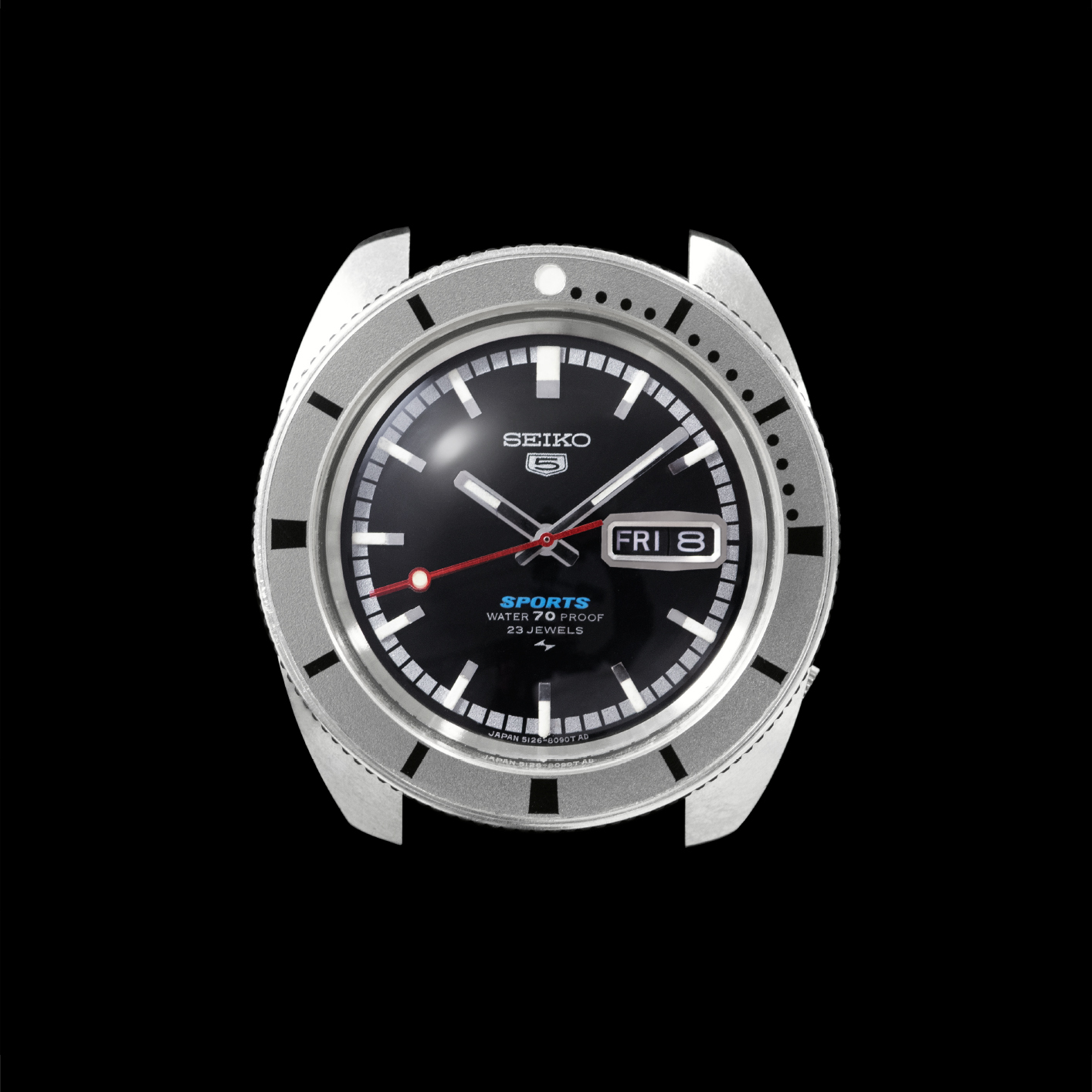
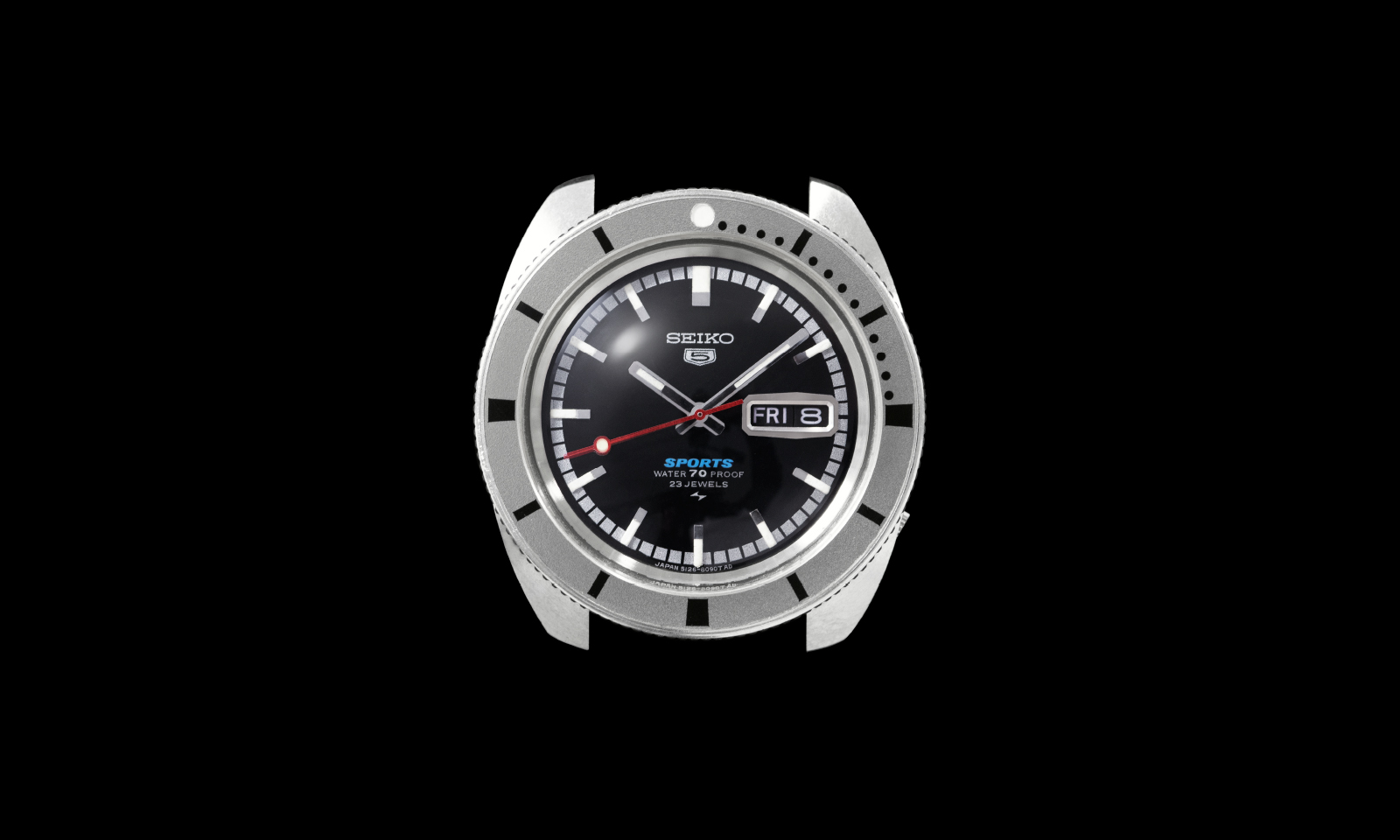
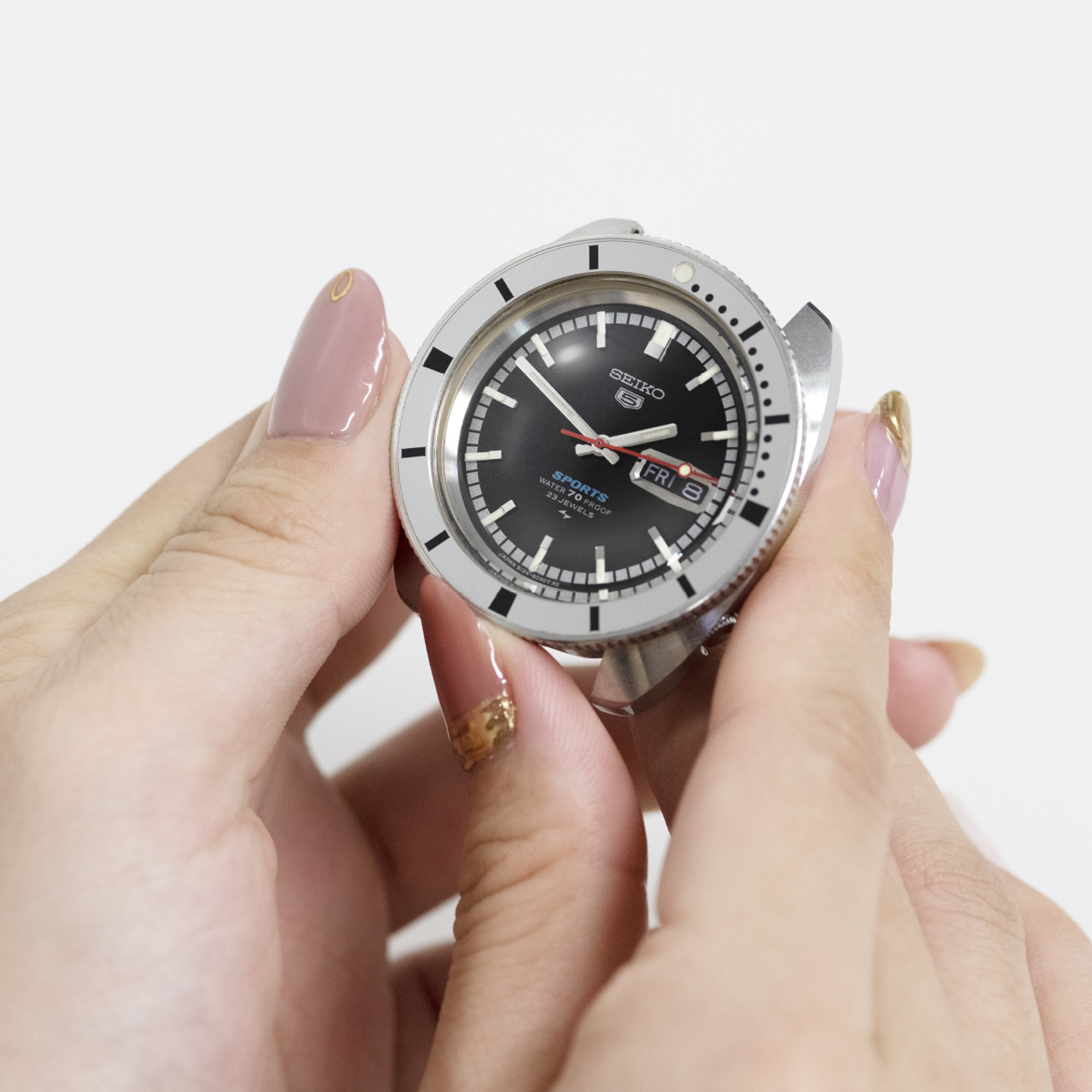
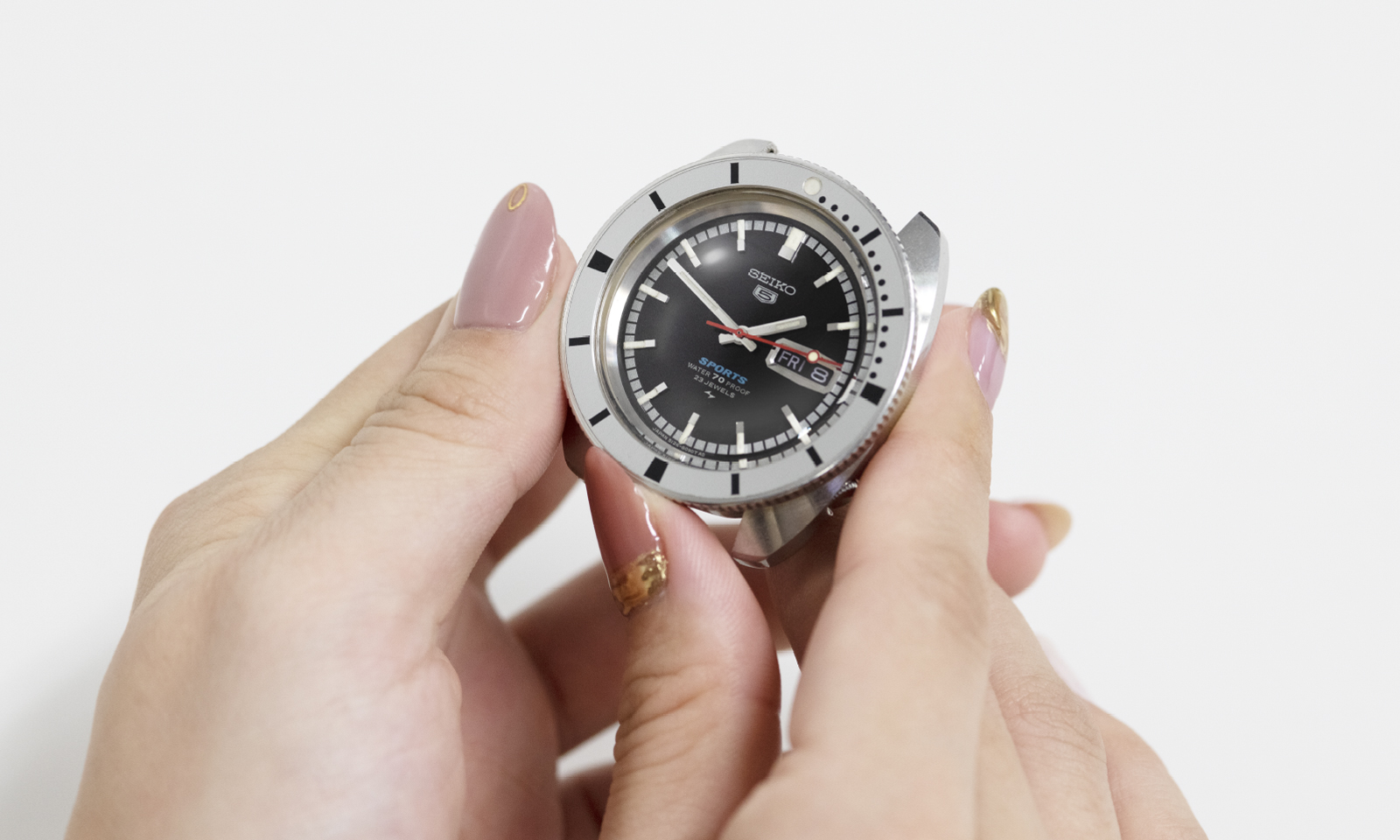
Suganuma: I was also surprised by the coloring and design of this watch with the yellow dial. The bangle-like bracelet, which was popular at the time, also has a very fresh look. I feel that it has a charm that we don’t see today.
Fujimoto: The round shape and thickness of the indexes are also very distinctive. As I recall, fans call it a “sushi roll” because of its appearance. It really does look like a sushi roll.
Kumagai: This is a design that would not be possible today. This is partly because the quality standards for watches were different from those of today, but also because of the trends of the times. A certain freedom of design led to many models with designs that would not occur to us with our modern ideas. That is why they have been given nicknames and have gained a deep-rooted popularity among fans around the world.
Kumagai: This was the time when the sports watch genre was beginning to expand, so I think the designers of the time were pursuing not just functionality, but also what they thought would look cool. We can feel the playfulness of their free ideas.
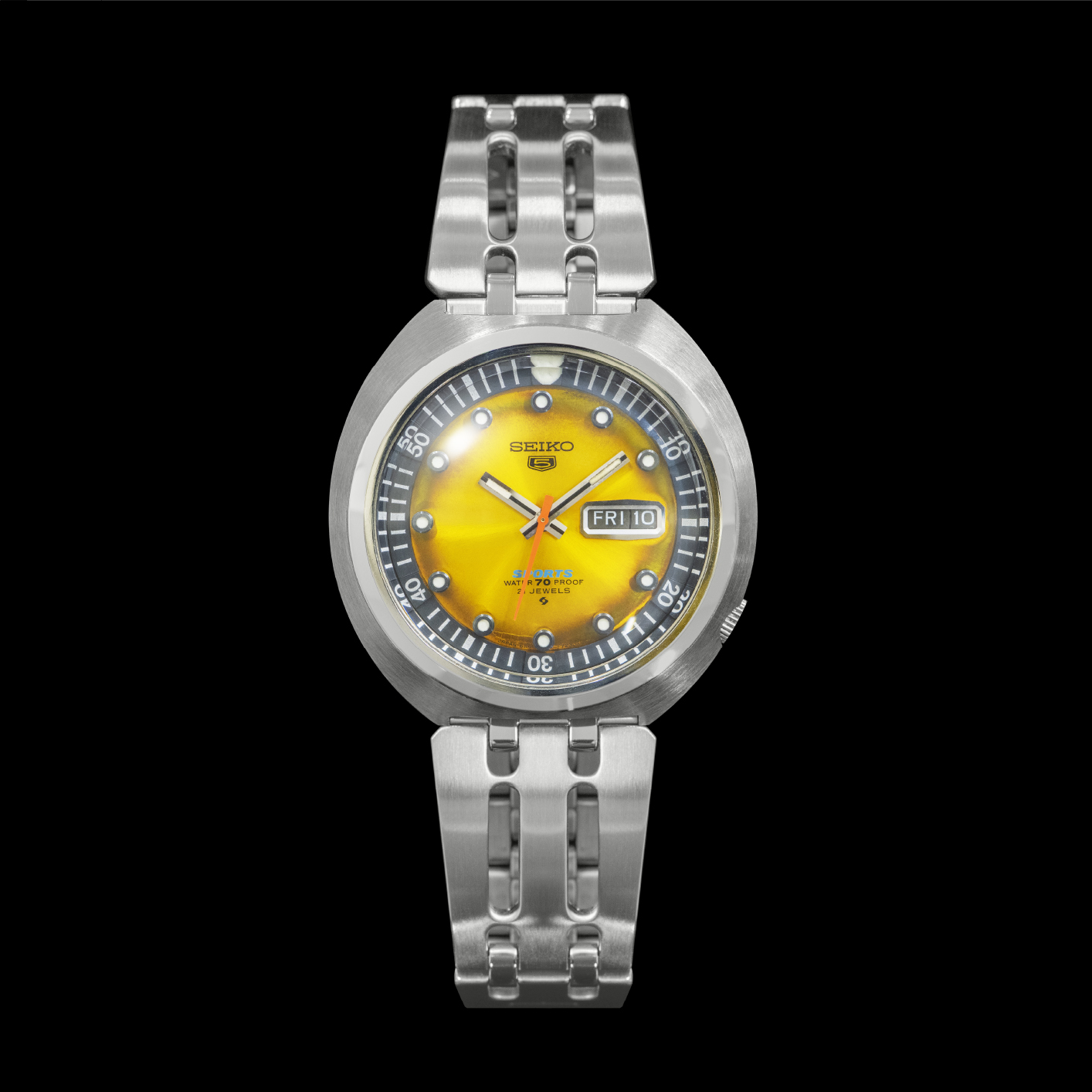
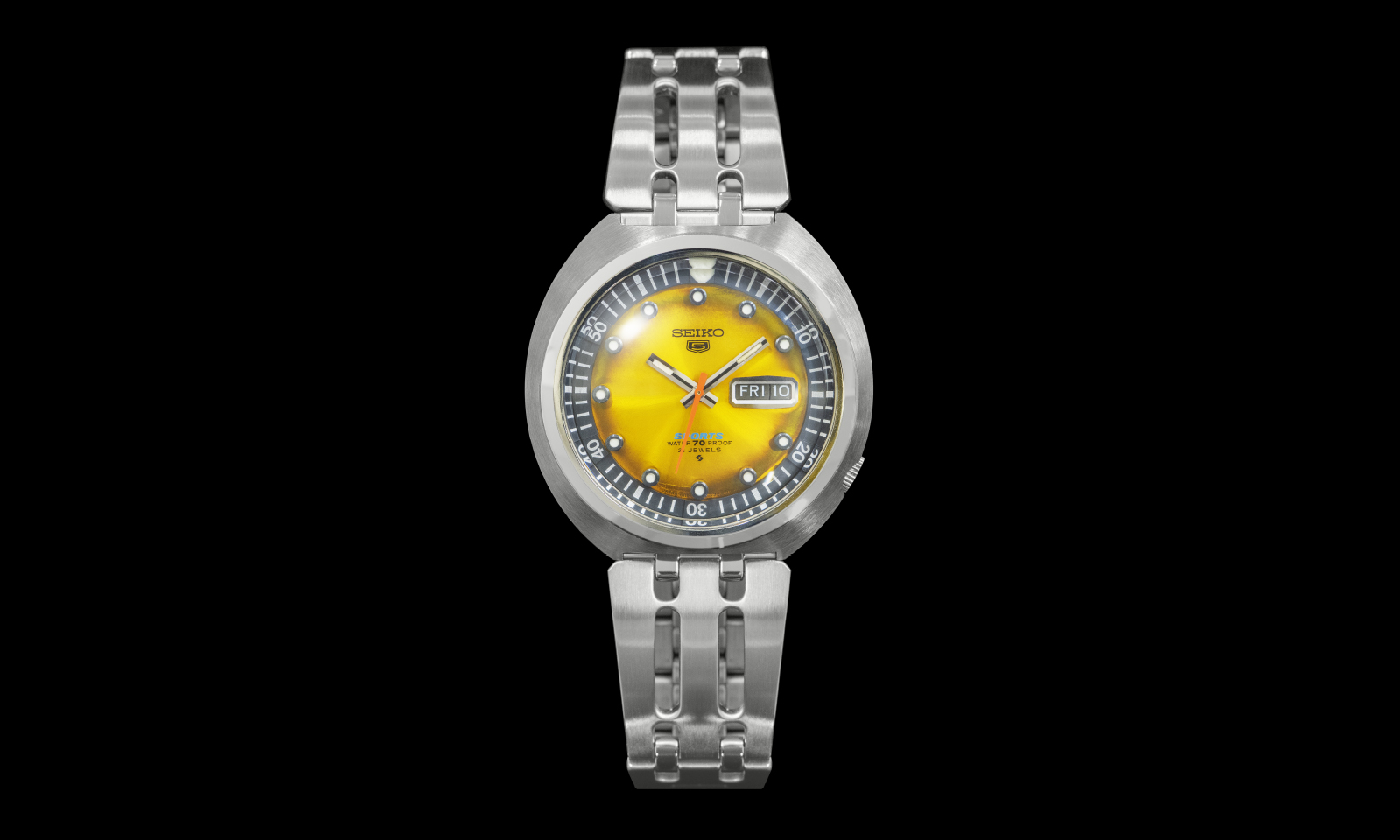
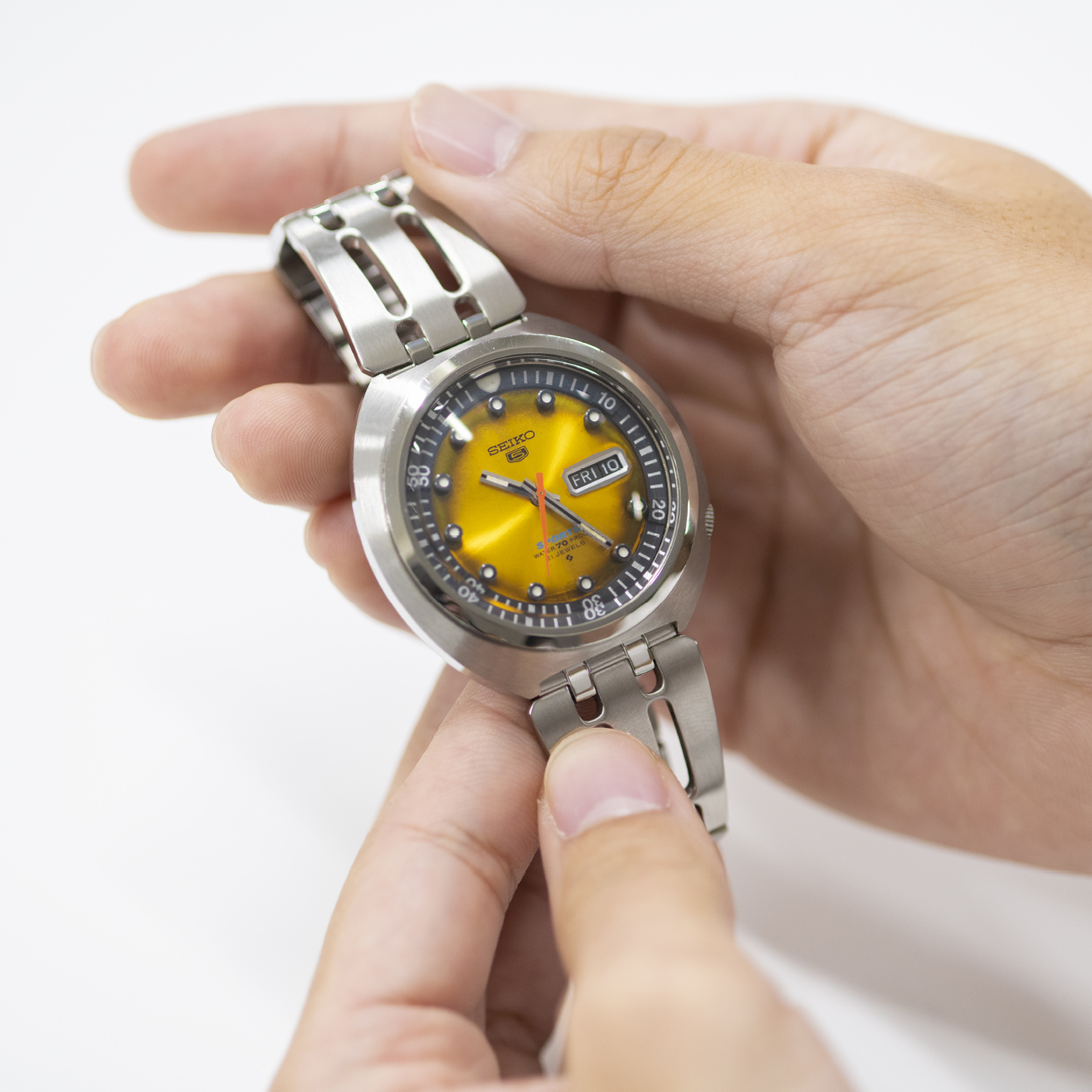
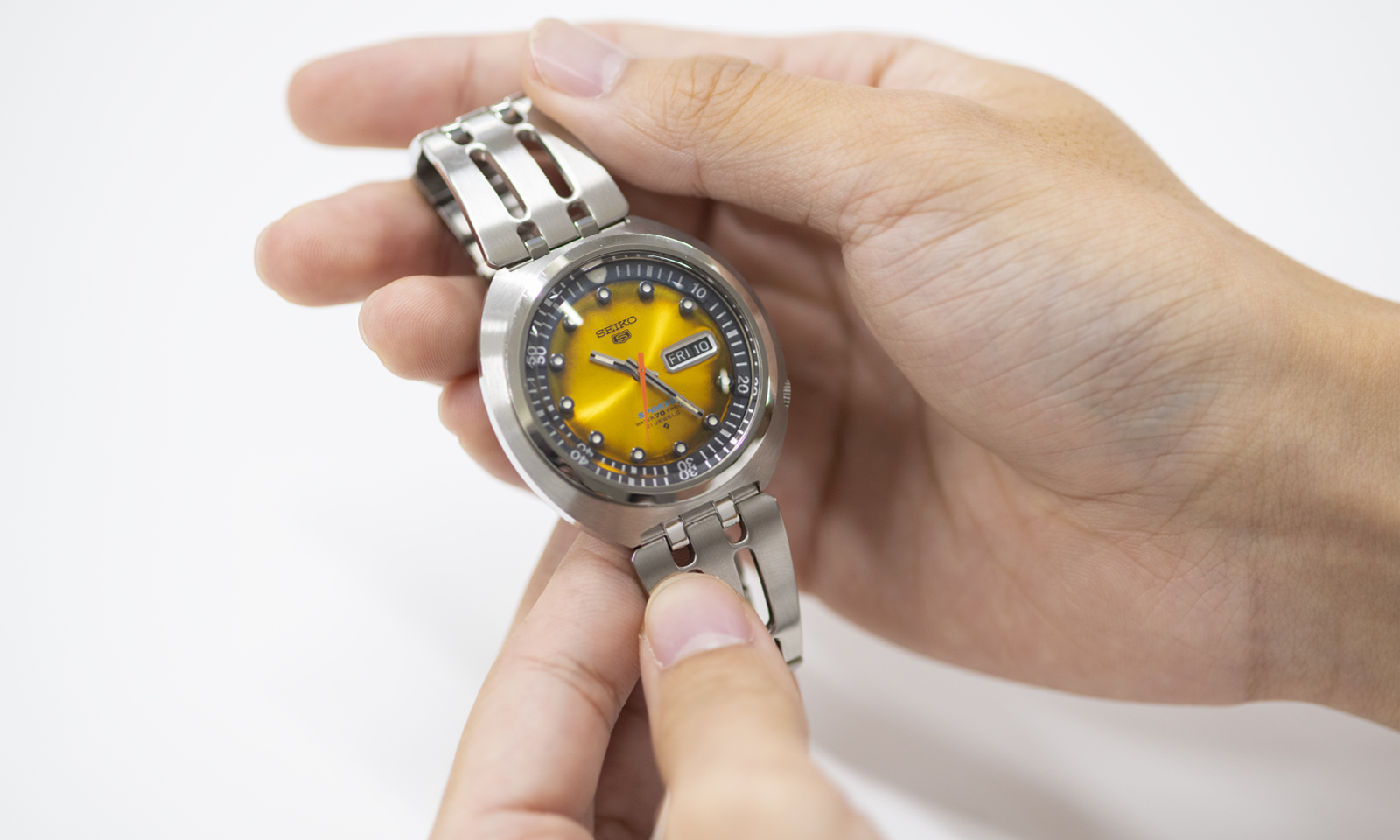
The past and future of Seiko 5 Sports.
Fujimoto: Today, by focusing on Seiko 5 Sports from the 1960s to the 1970s, I was able to reconfirm not only the differences from today, but also the similarities. That is, the ideal “to be close to the youth and empower them.” I was happy to see that even though times have changed, that particular value remains the same.
Suganuma: In terms of staying close to the younger generation, I felt that they were trying to meet the needs of various youth through variations in design, and that is something still relevant today. However, in the past, colors and shapes were boldly changed to give them individuality, but now it seems to me that diversifying values are met by making changes to certain elements within a common base. I think this is symbolic of the modern age, where an individual person can become anything.
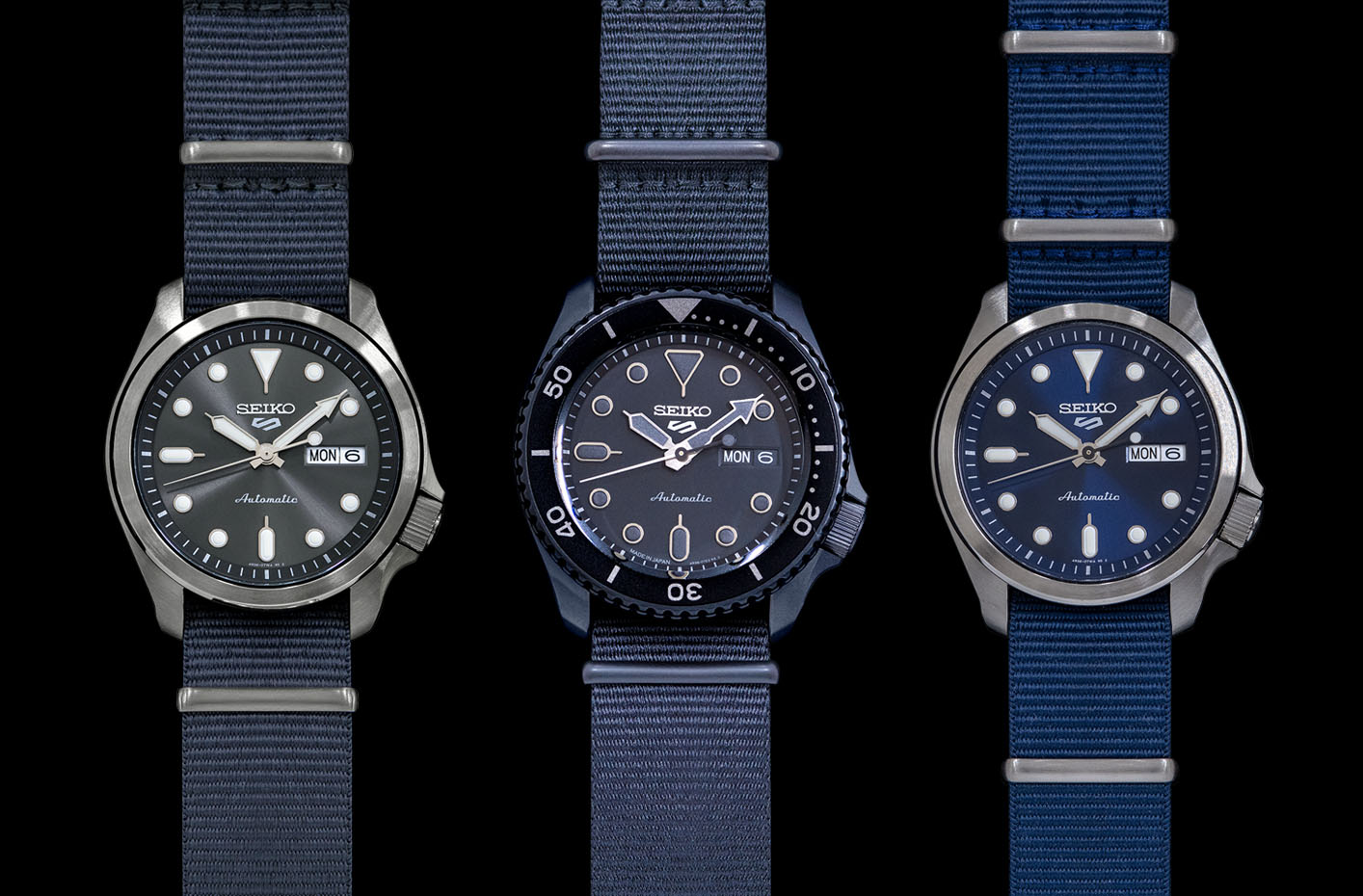
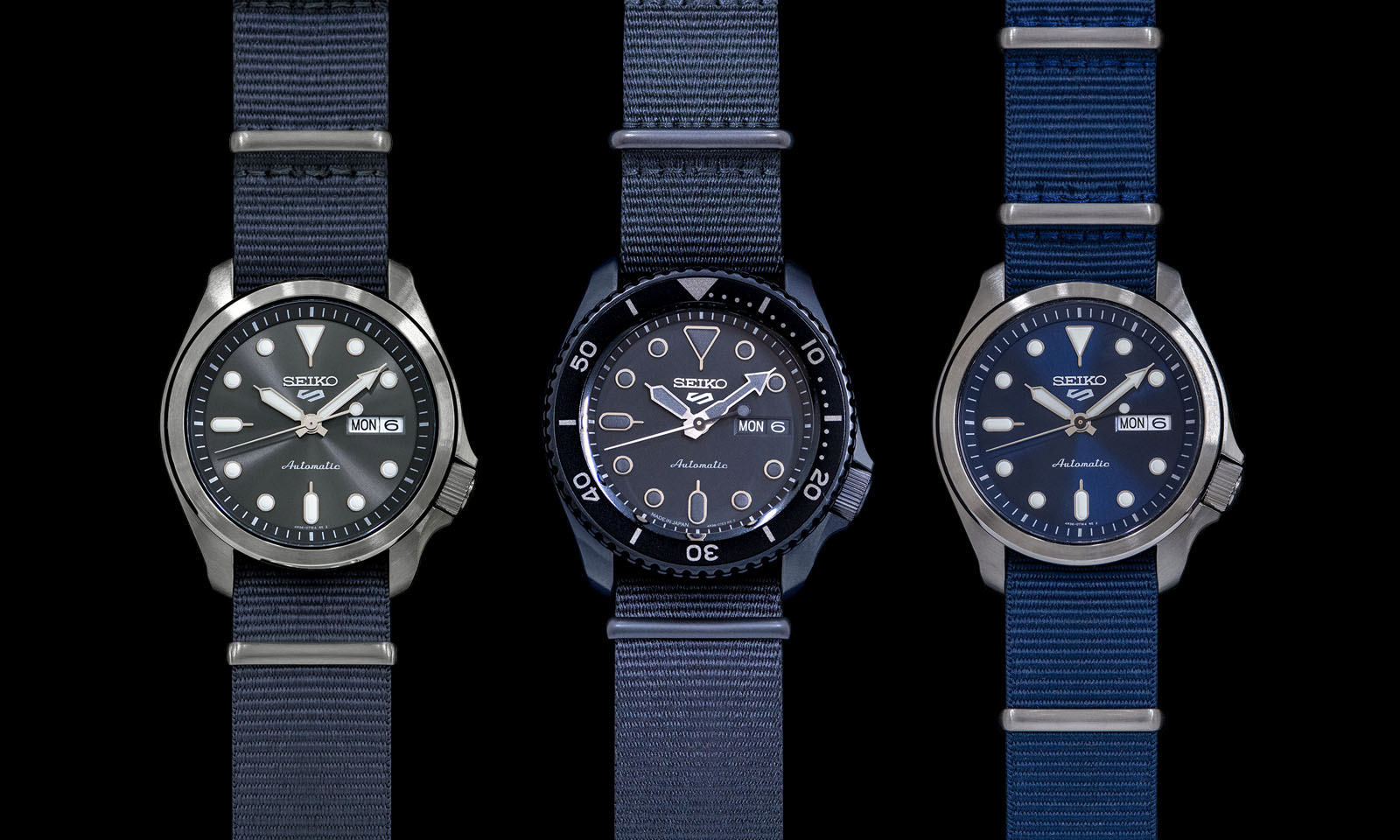
Kumagai: Today, there is a growing diversification of people’s sense of values, and it is difficult to say in general that “this is what people want.” For the two of you living in such an age, what do you think the future of Seiko 5 Sports should be?
Fujimoto: I feel that in today’s diversified world it is important to have a strong focal point and to continue to take the stance of “being close to the youth and empowering them.”
Kumagai: I see. What do you mean by that?
Fujimoto: The design base for the current core model of the Seiko 5 Sports is the SKX, a diver’s watch that has been loved by fans for many years. Because we have this base, or what we might call the classic style, we can promote the idea of matching a diversity of values with the expression “show your style.” I think it is precisely because we have this focal point that we can continue to exercise freedom.
Fujimoto: Currently, as one of the styles defined as 5 Styles, we are launching a variety of models in collaboration with artists and brands of the younger generation that are close to the youth. Every time we receive a positive response, we feel that we are making our fans happy, and we would like to continue to provide our fans with that special watch that will be a companion to them.
Suganuma: I think there needs to be more opportunities for people to learn about the existence and merits of mechanical watches. In the first place, I don’t think people in their 20s are even aware of the difference between quartz and mechanical watches. I am ashamed to admit that I had never really thought about it until I joined Seiko Watch.
Fujimoto: I might have been the same way.
Suganuma: However, after I started using mechanical watches, I found the act of winding the crown by hand to be fun in itself, and the fact that the watch ticked away the time using only the power produced by winding the mainspring without using any electronic parts seemed admirable and charming. I want people to realize that they can develop an emotional connection with a watch in that way, and I feel that this is important for watches to be loved for a long time.
Kumagai: Seiko’s mechanical watches have reliability and history based on technology. What kind of presence will Seiko 5 Sports, which was renewed in 2019, have for the youth in the future? As a member of The Seiko Museum Ginza and a fan of the brand, I am very much looking forward to the future.
